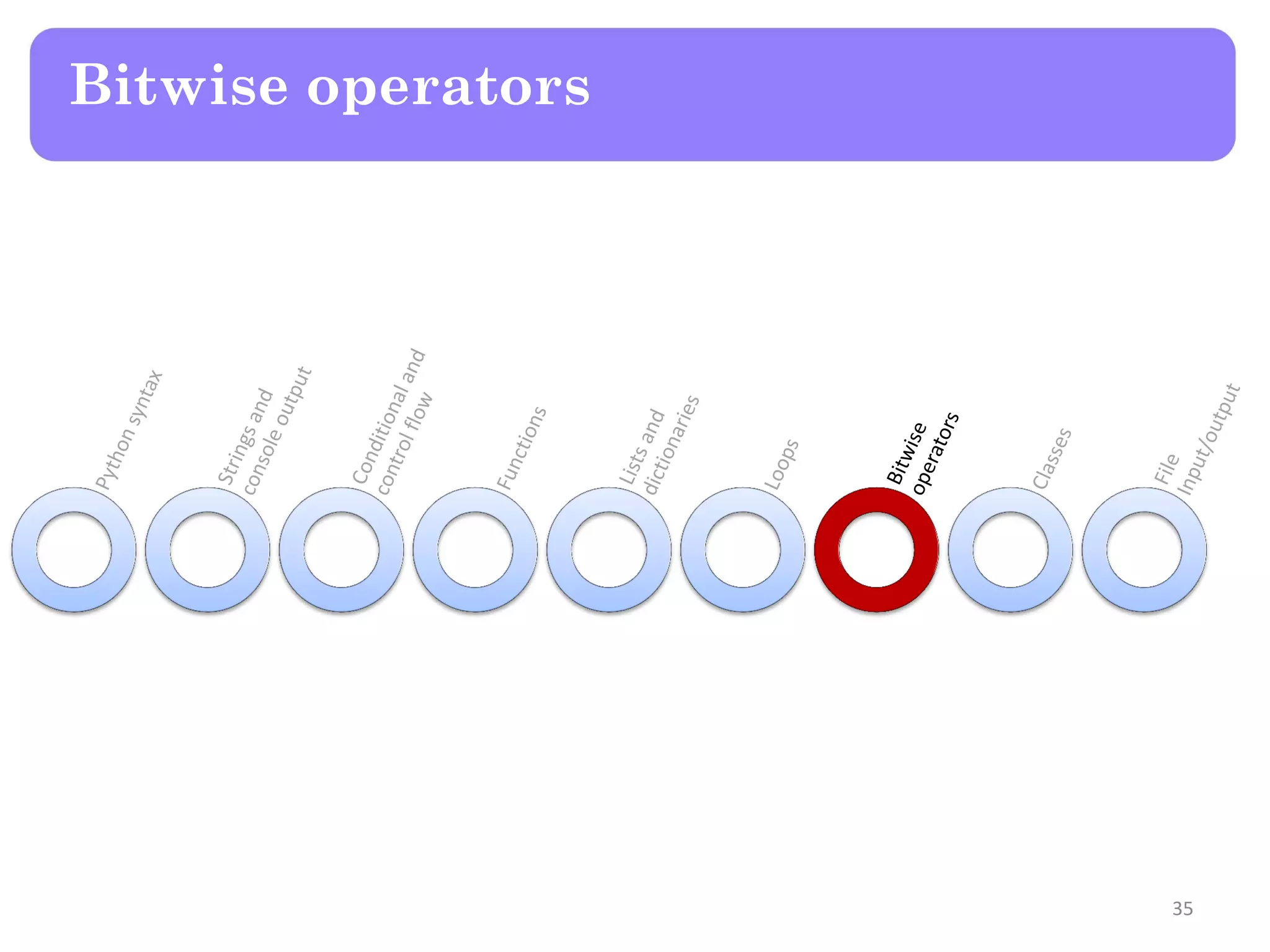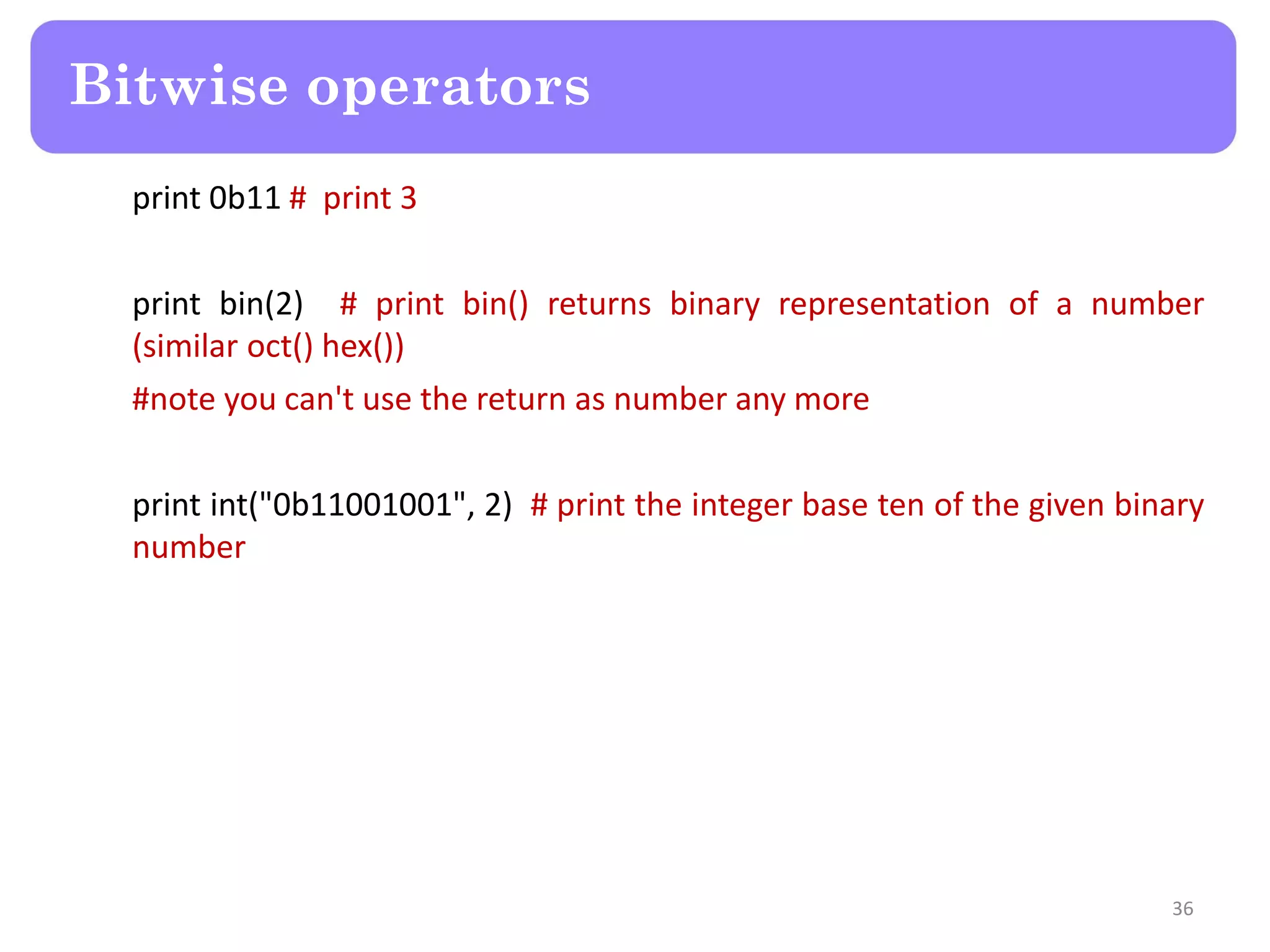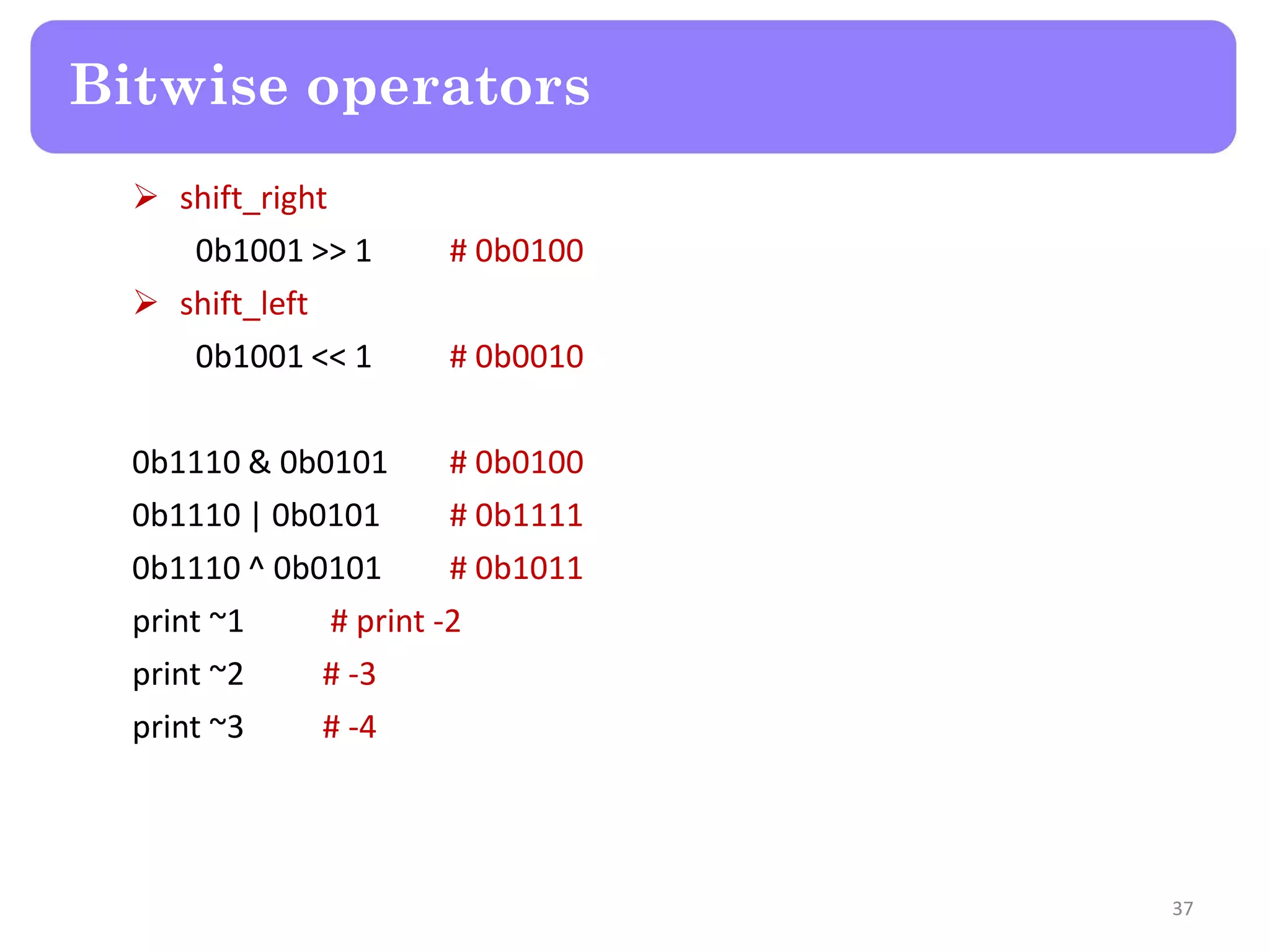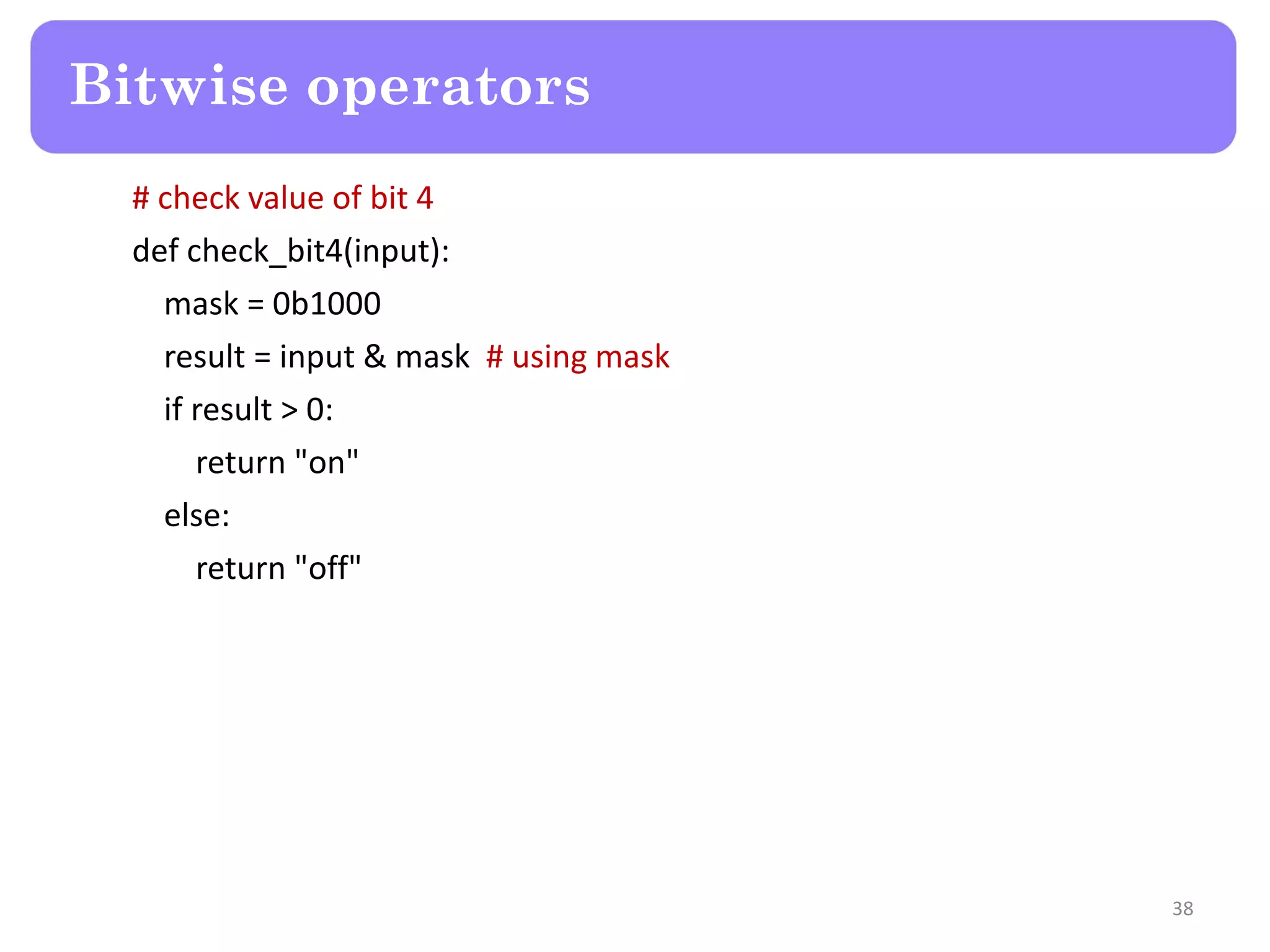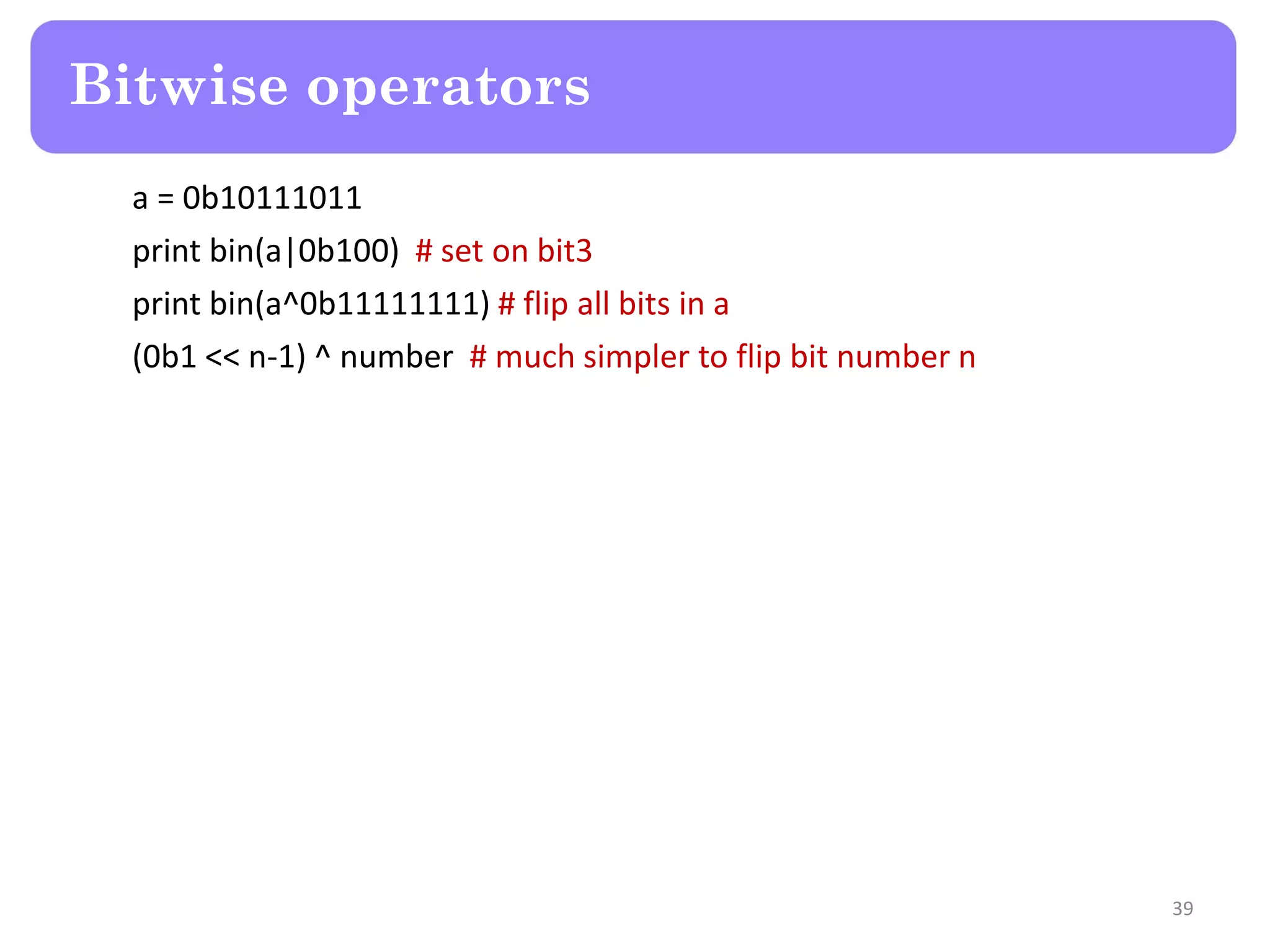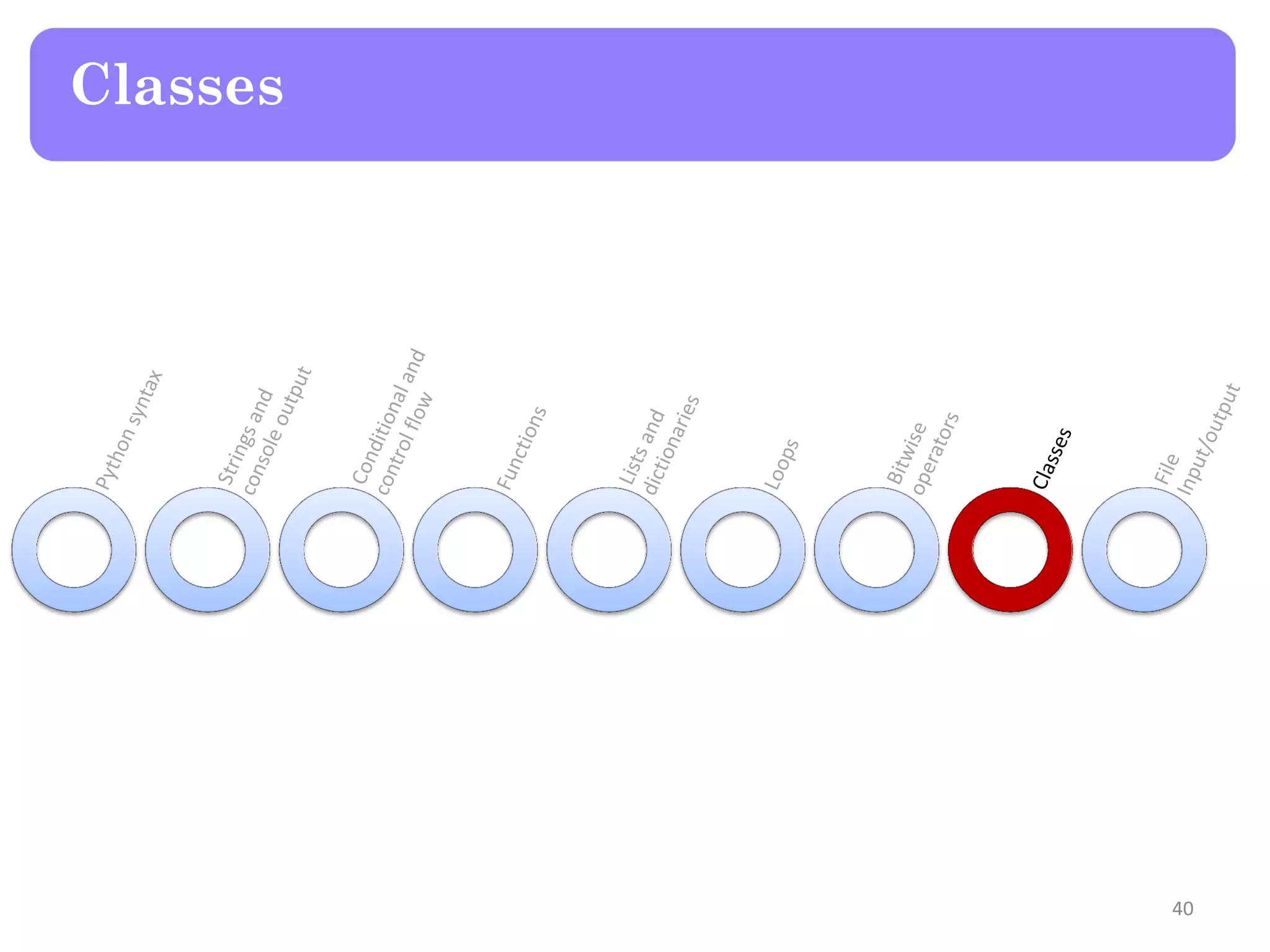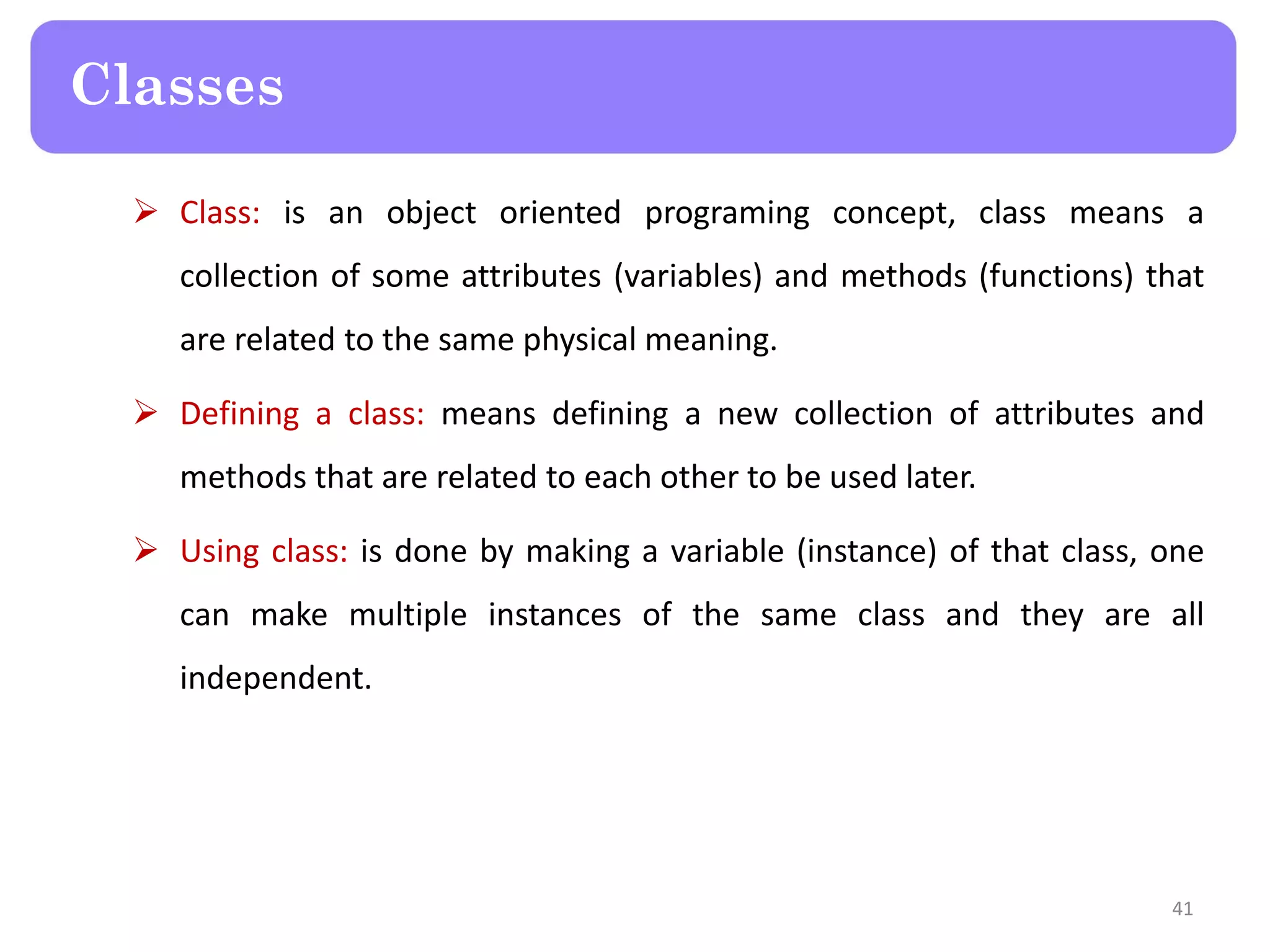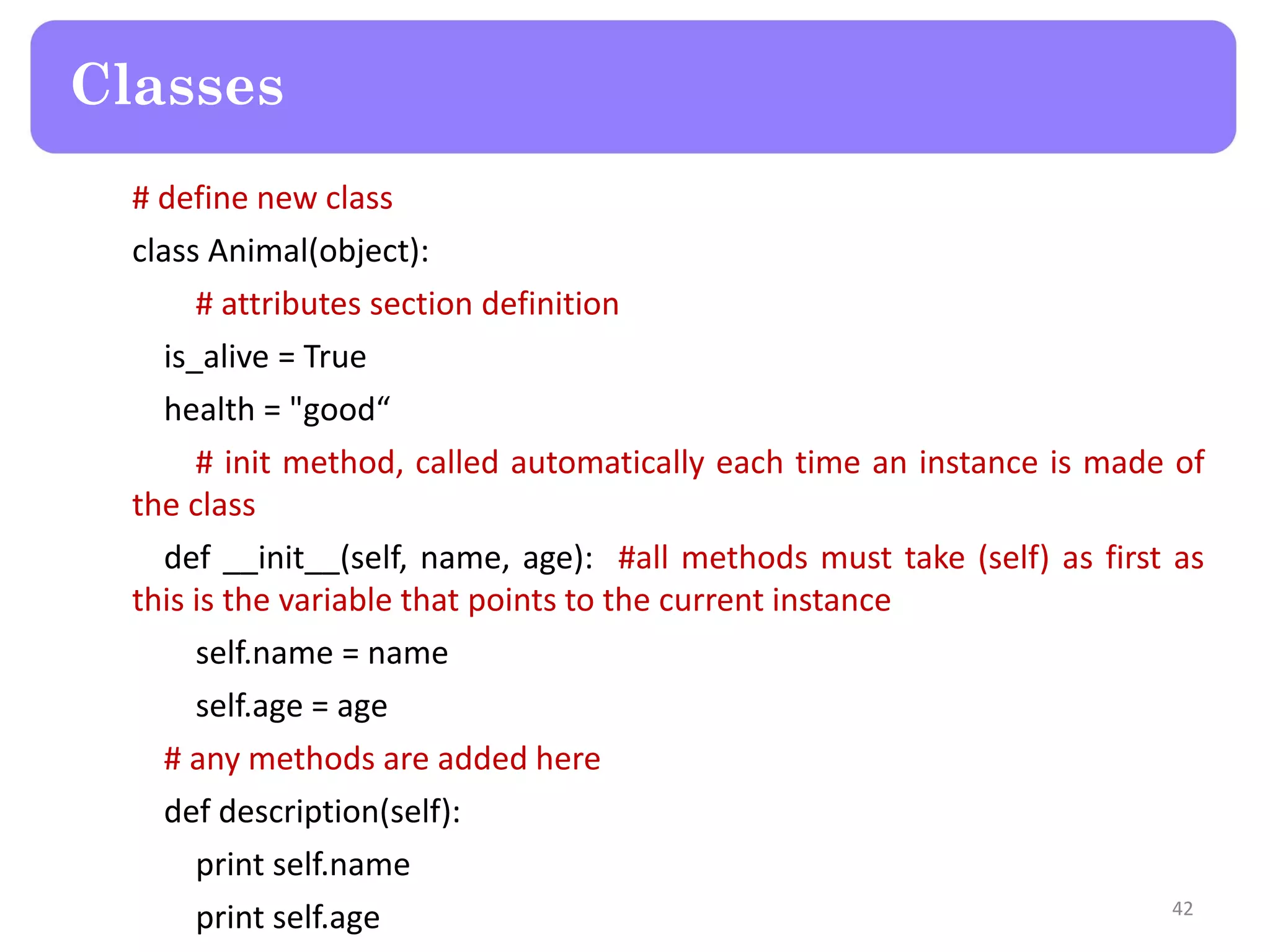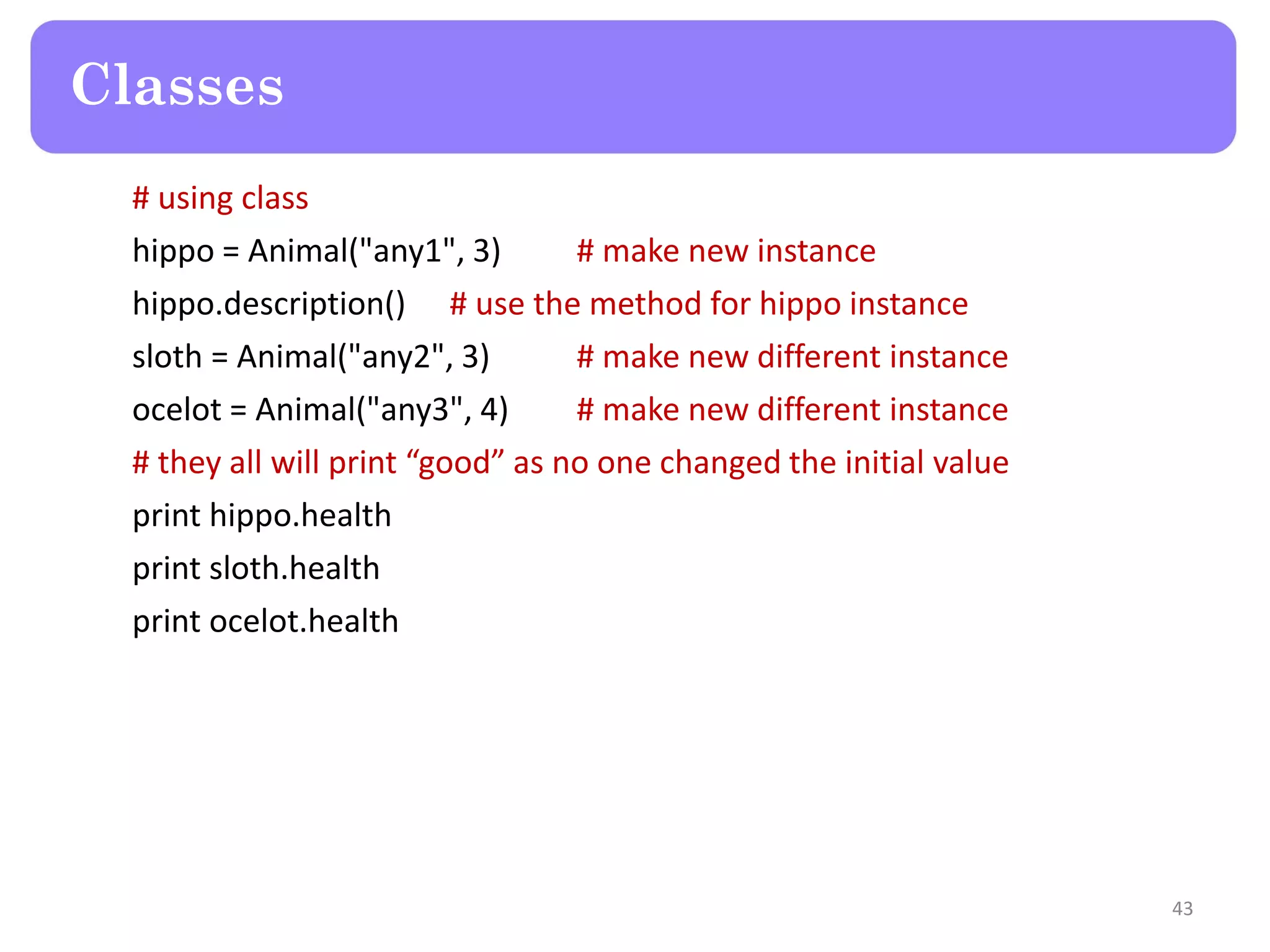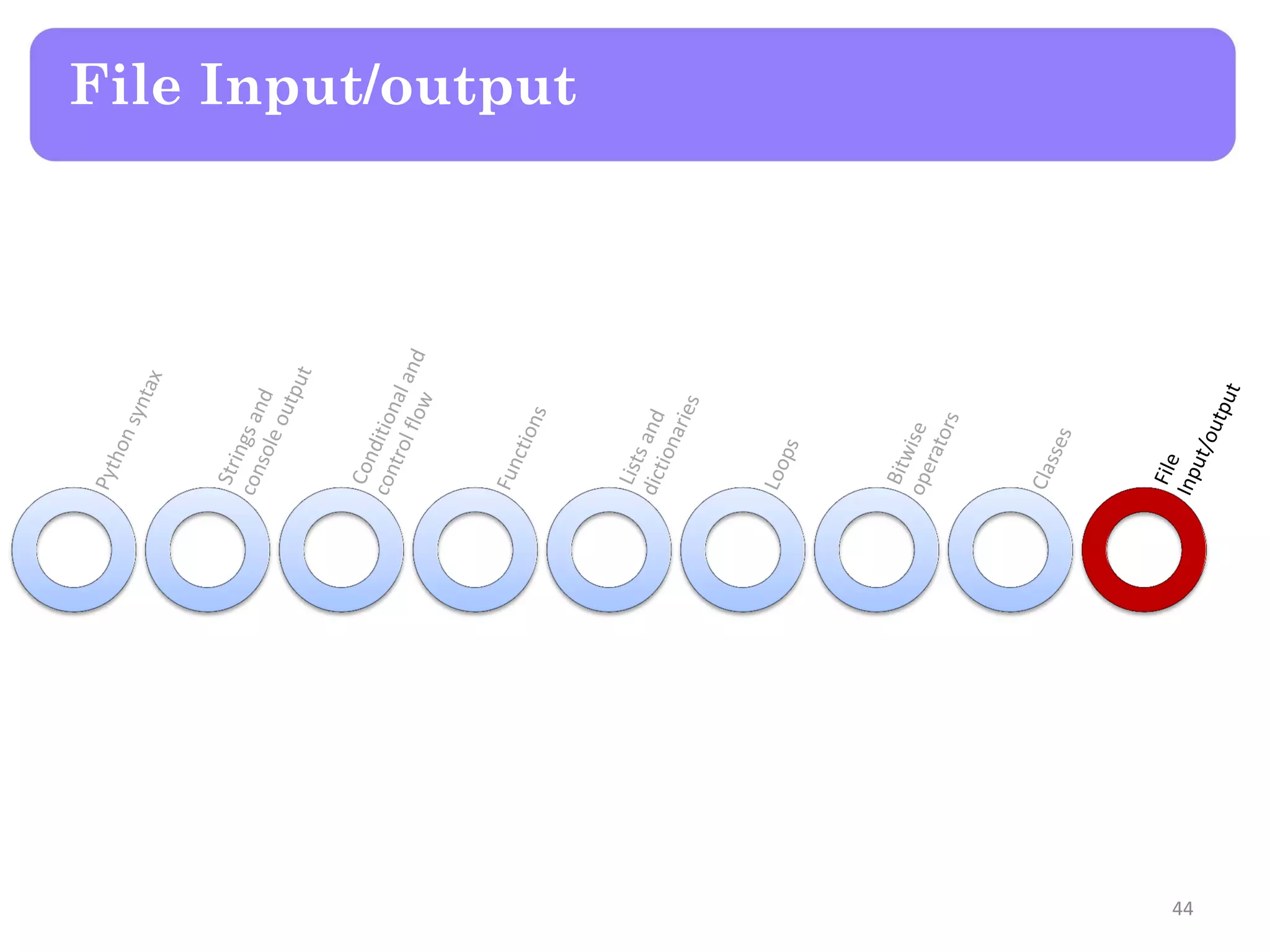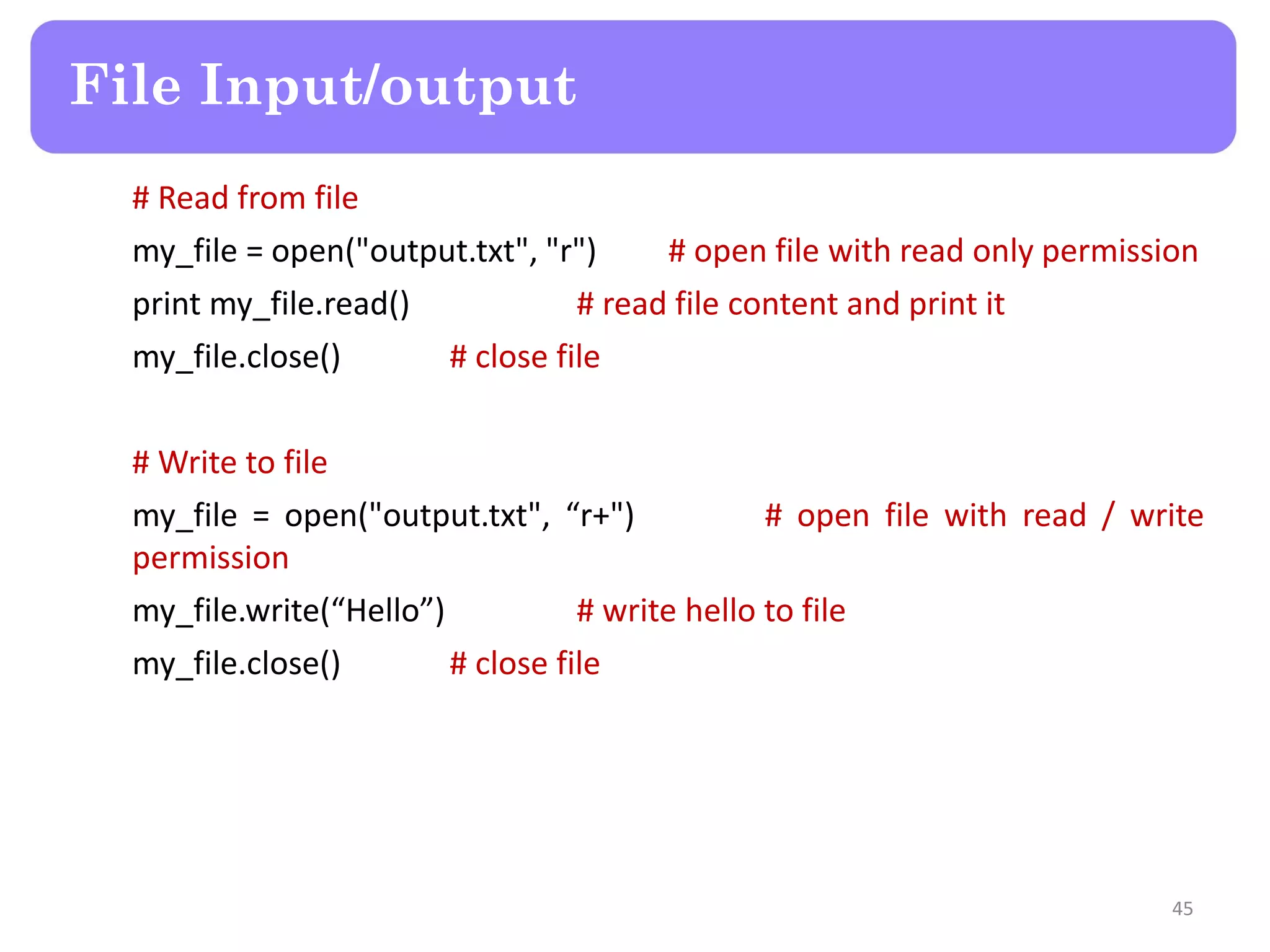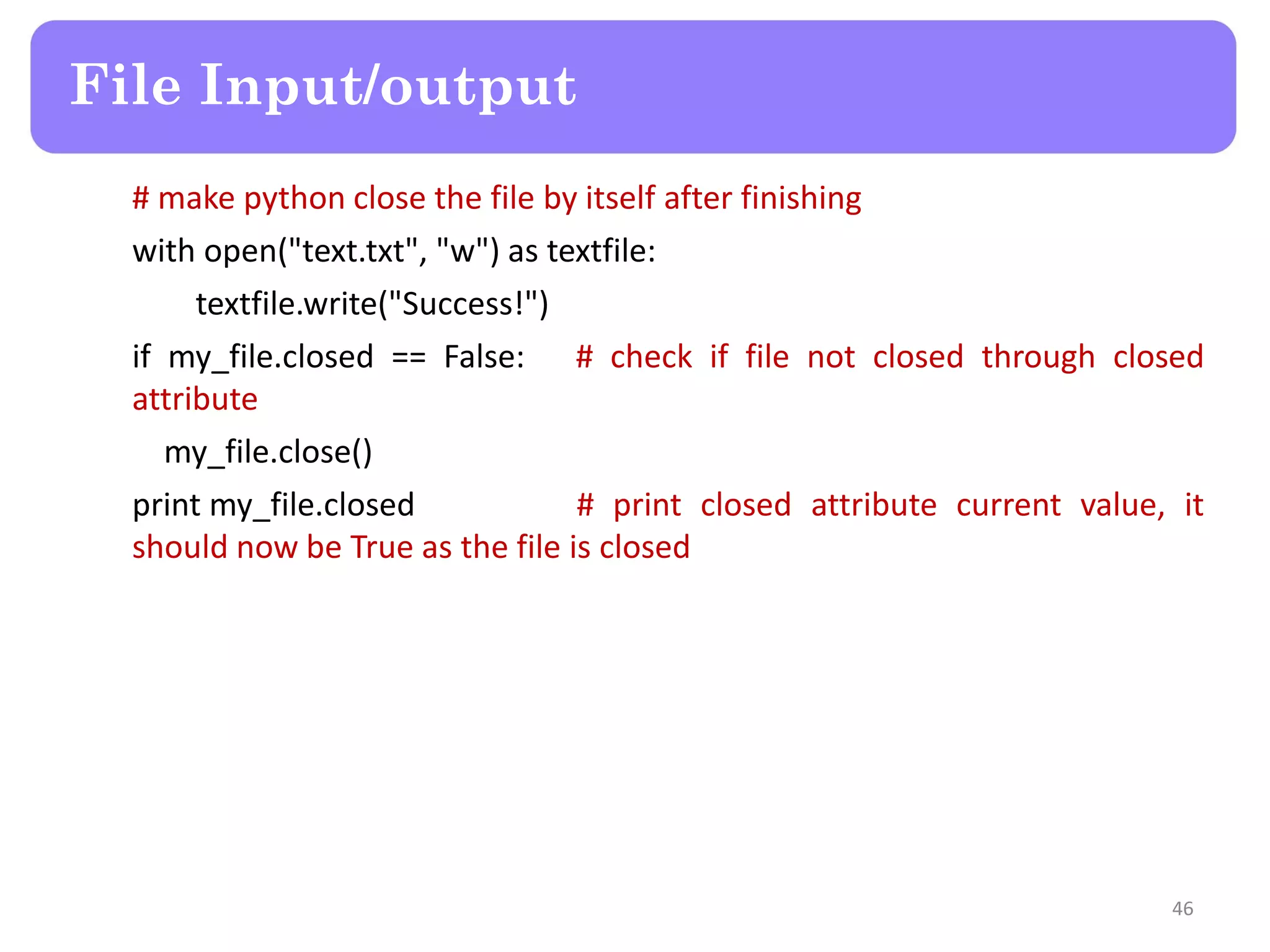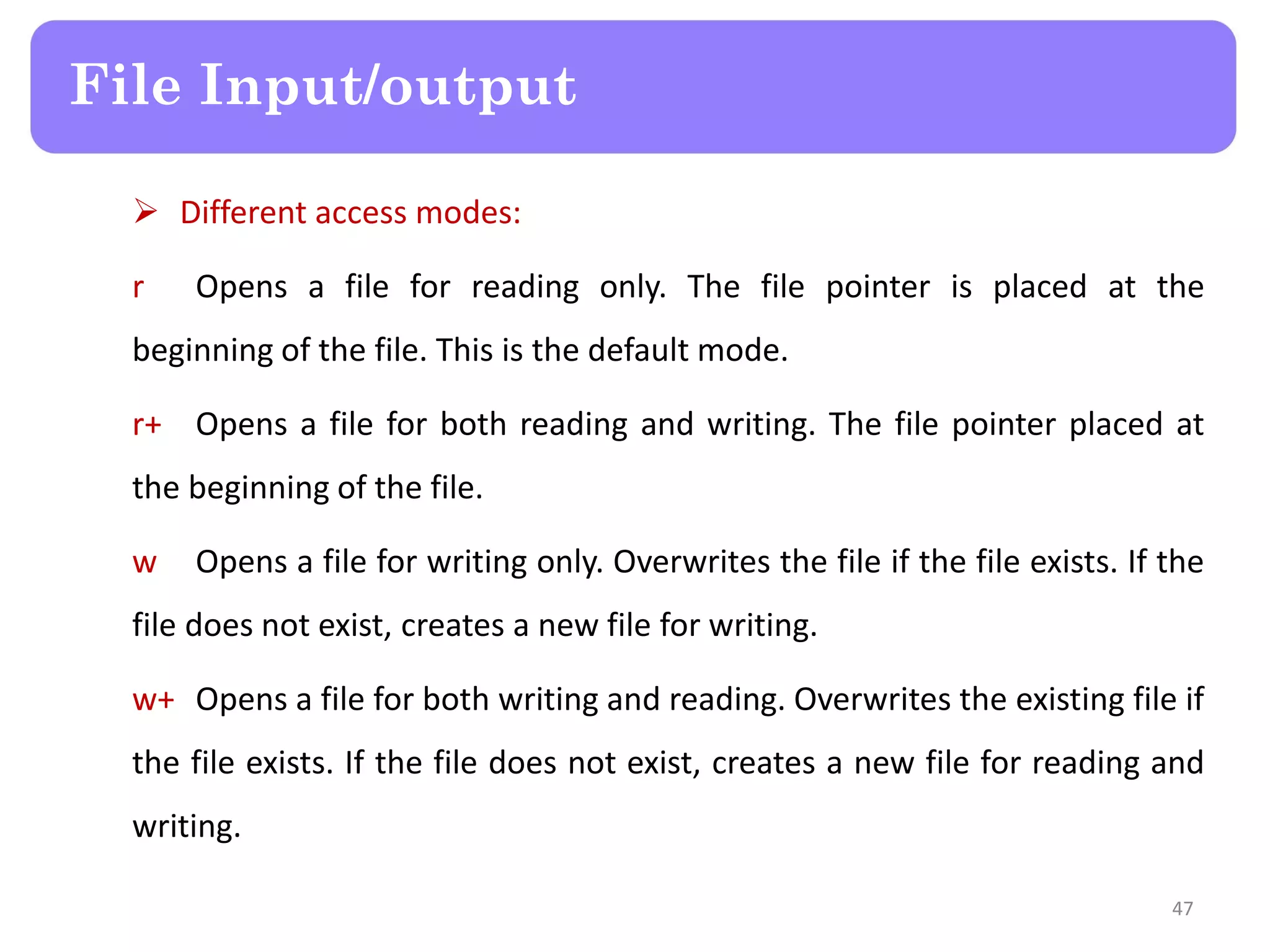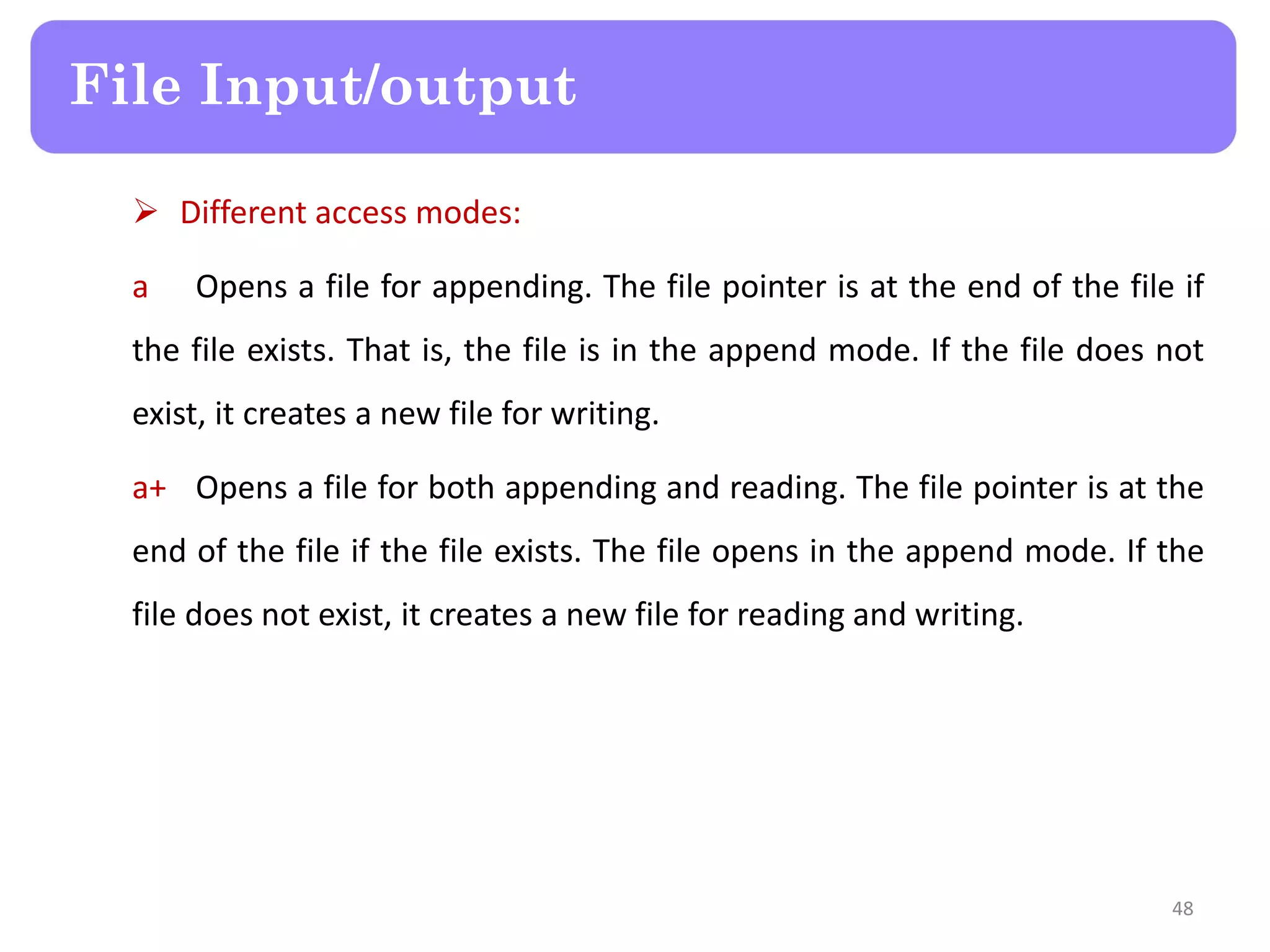The document is a lecture on Python for Raspberry Pi, covering topics such as syntax, strings, functions, control flow, lists, and file I/O. It includes practical code examples and explanations of various Python concepts like dictionaries, loops, and classes. This lecture aims to provide foundational knowledge for programming with Python in embedded systems.
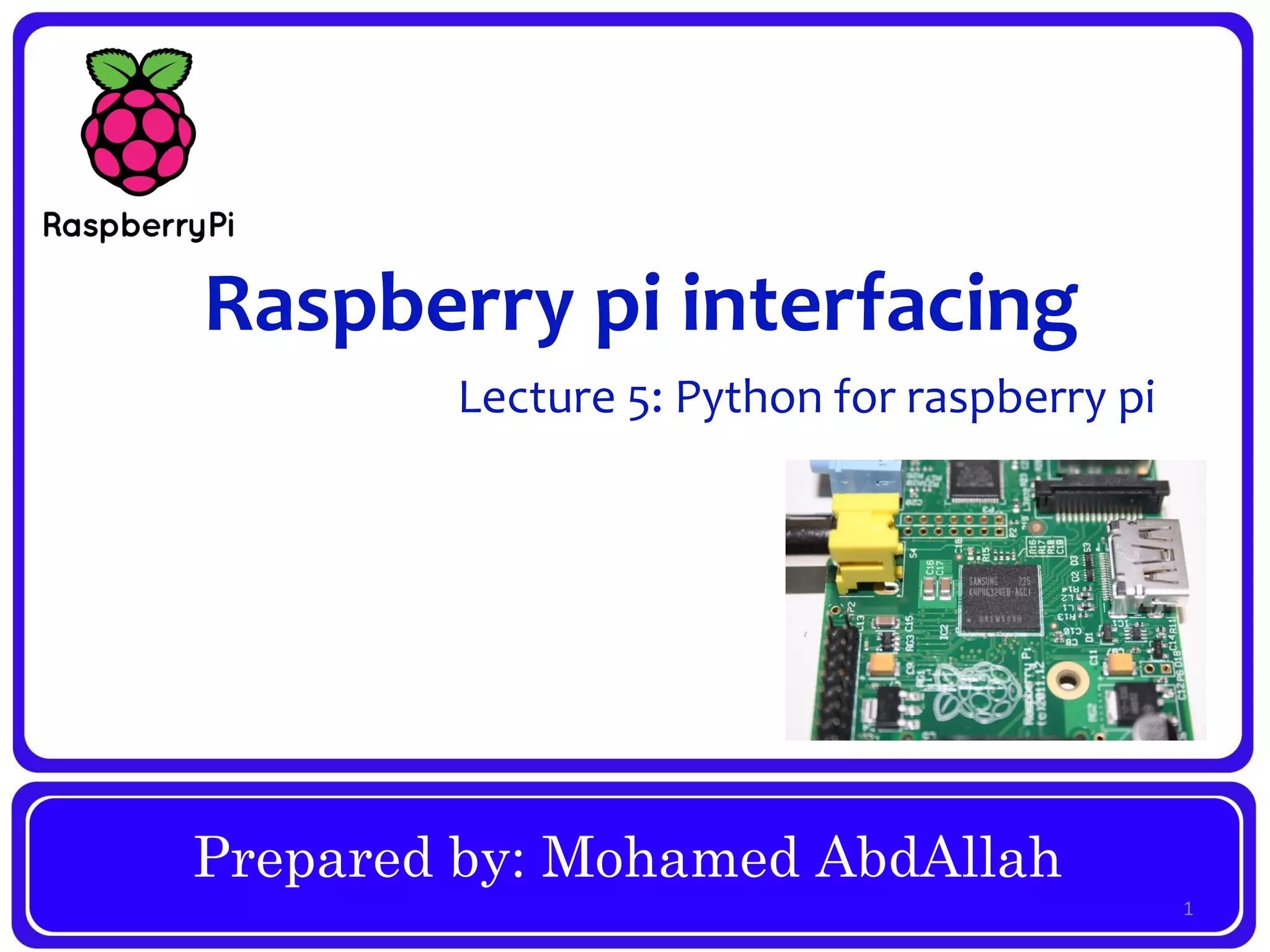
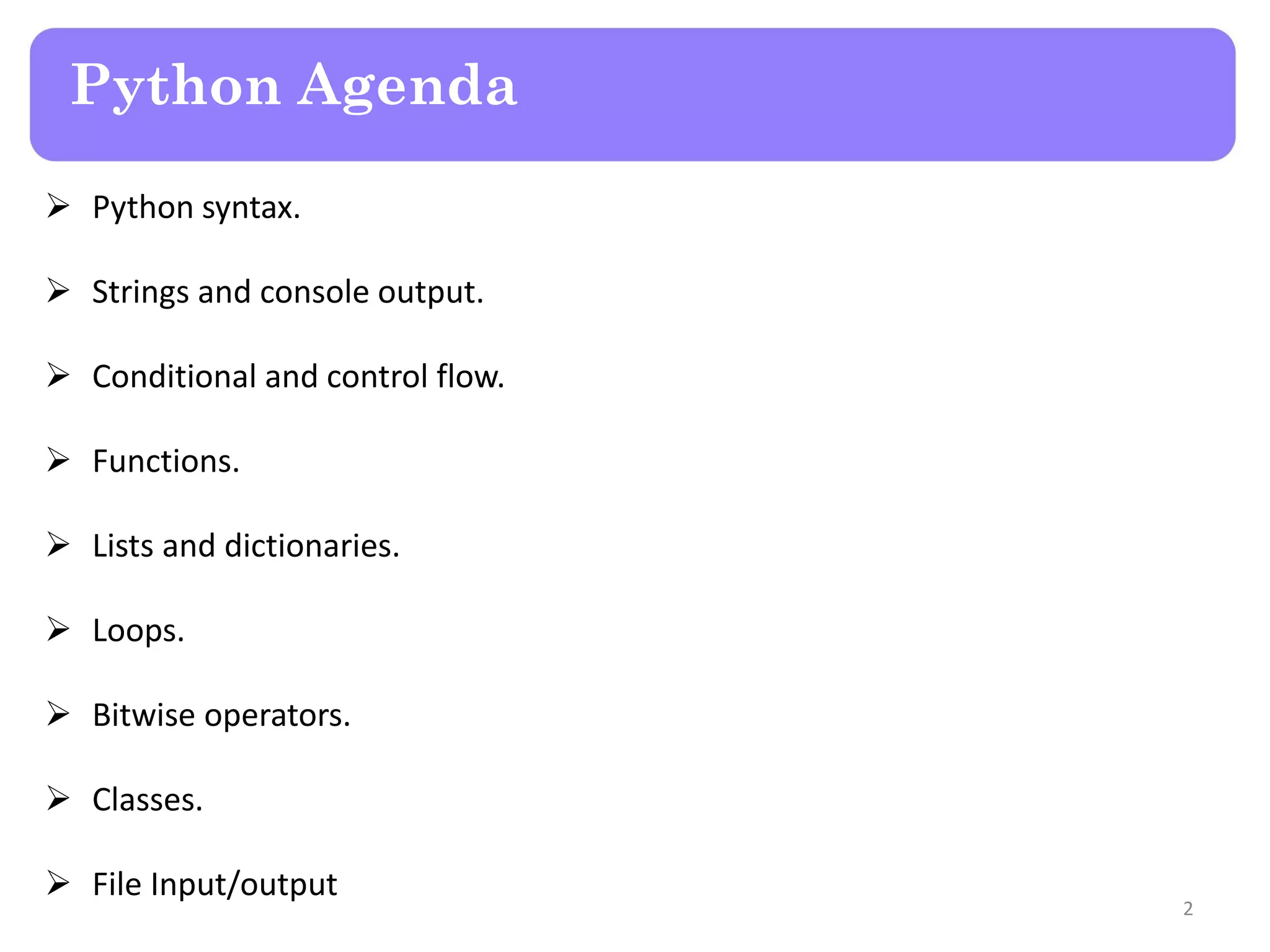
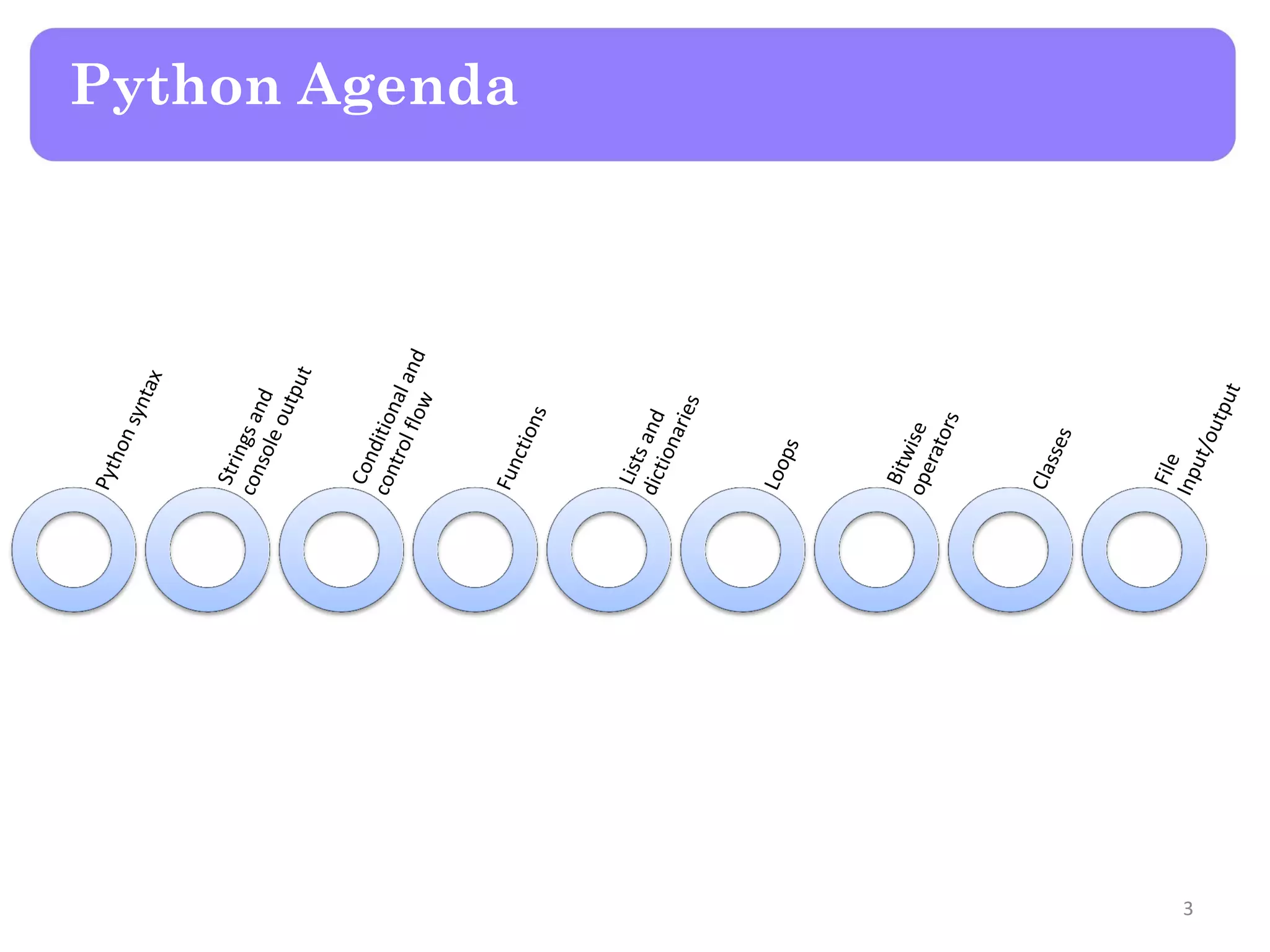
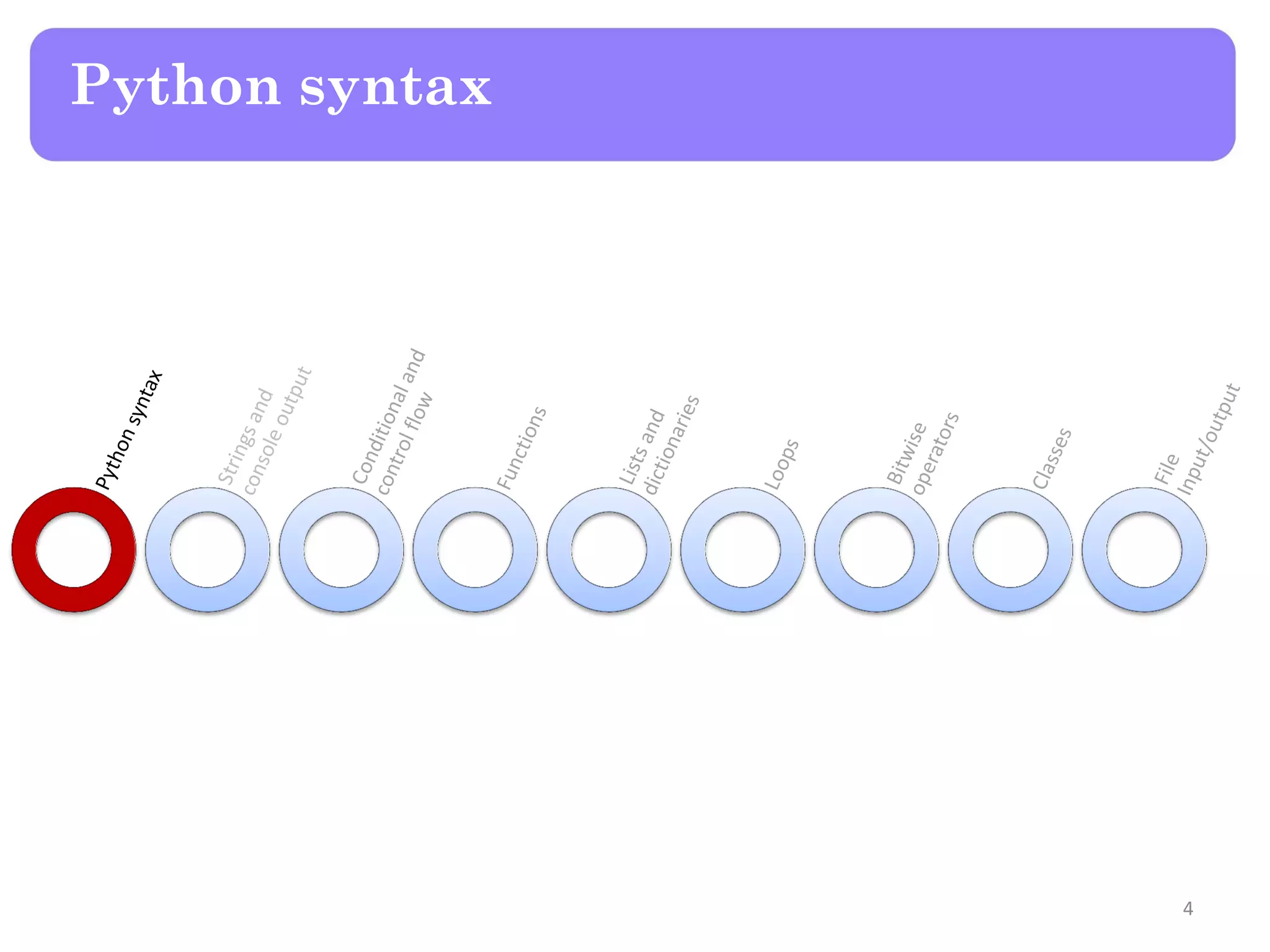
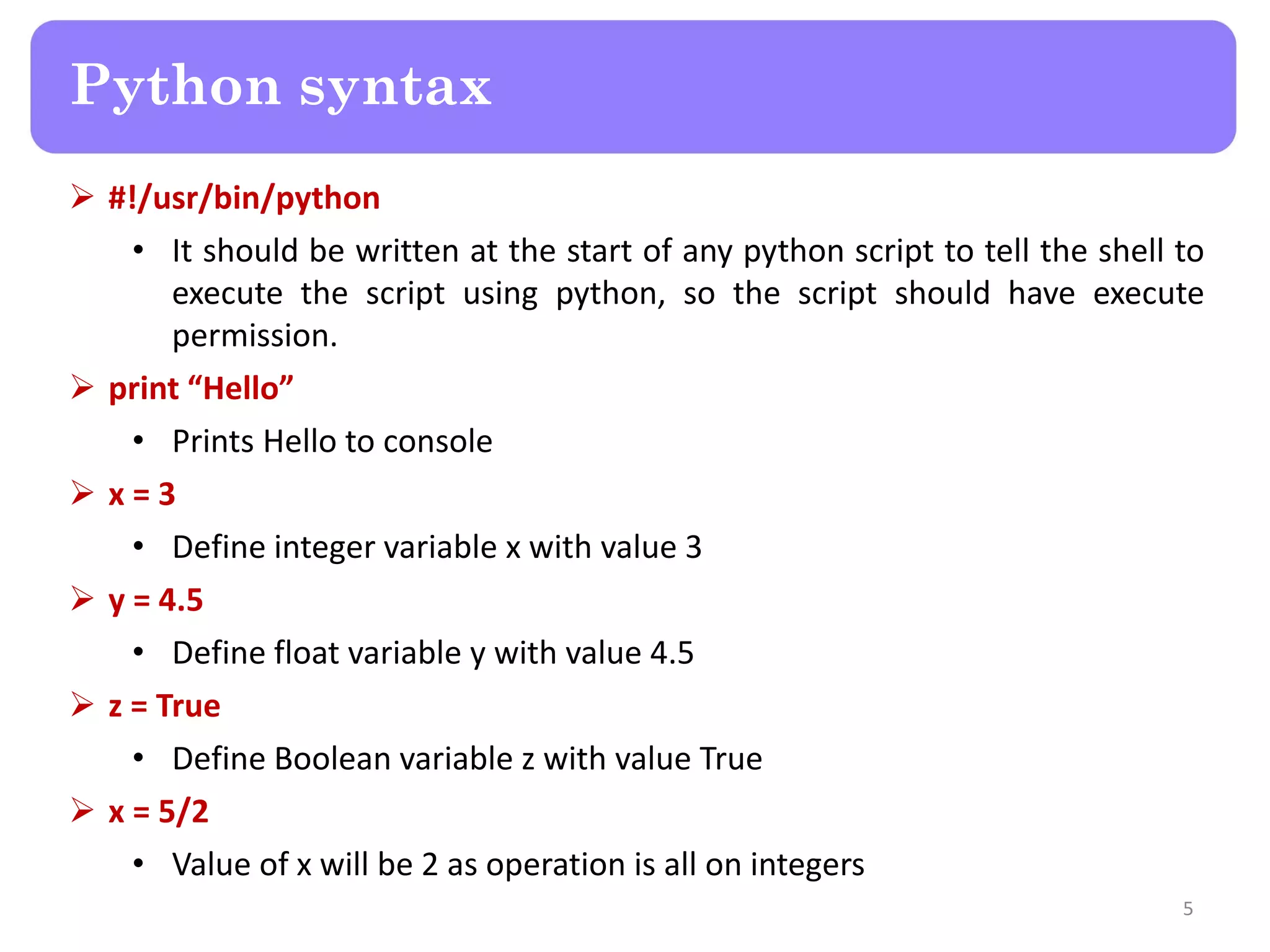
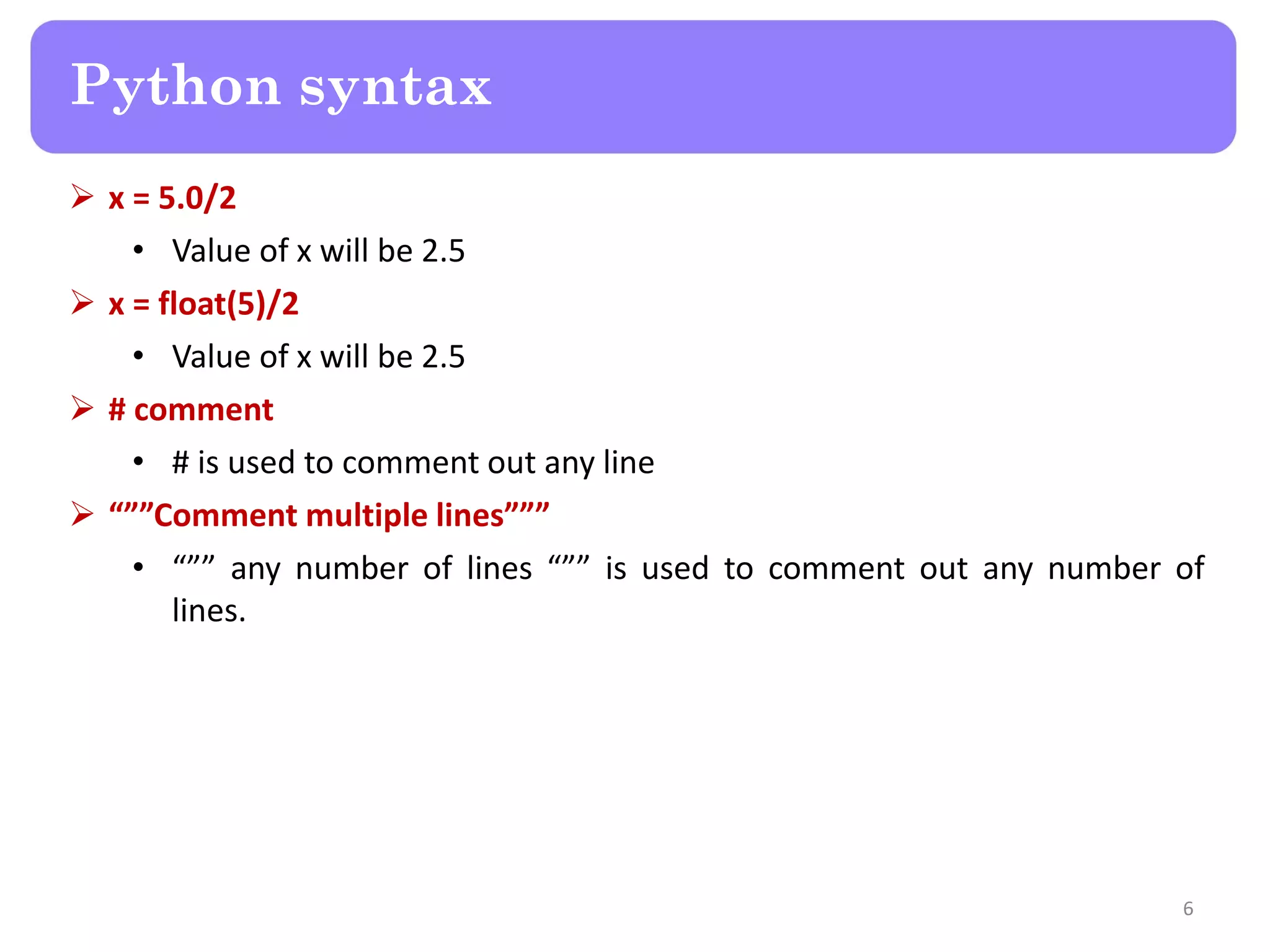
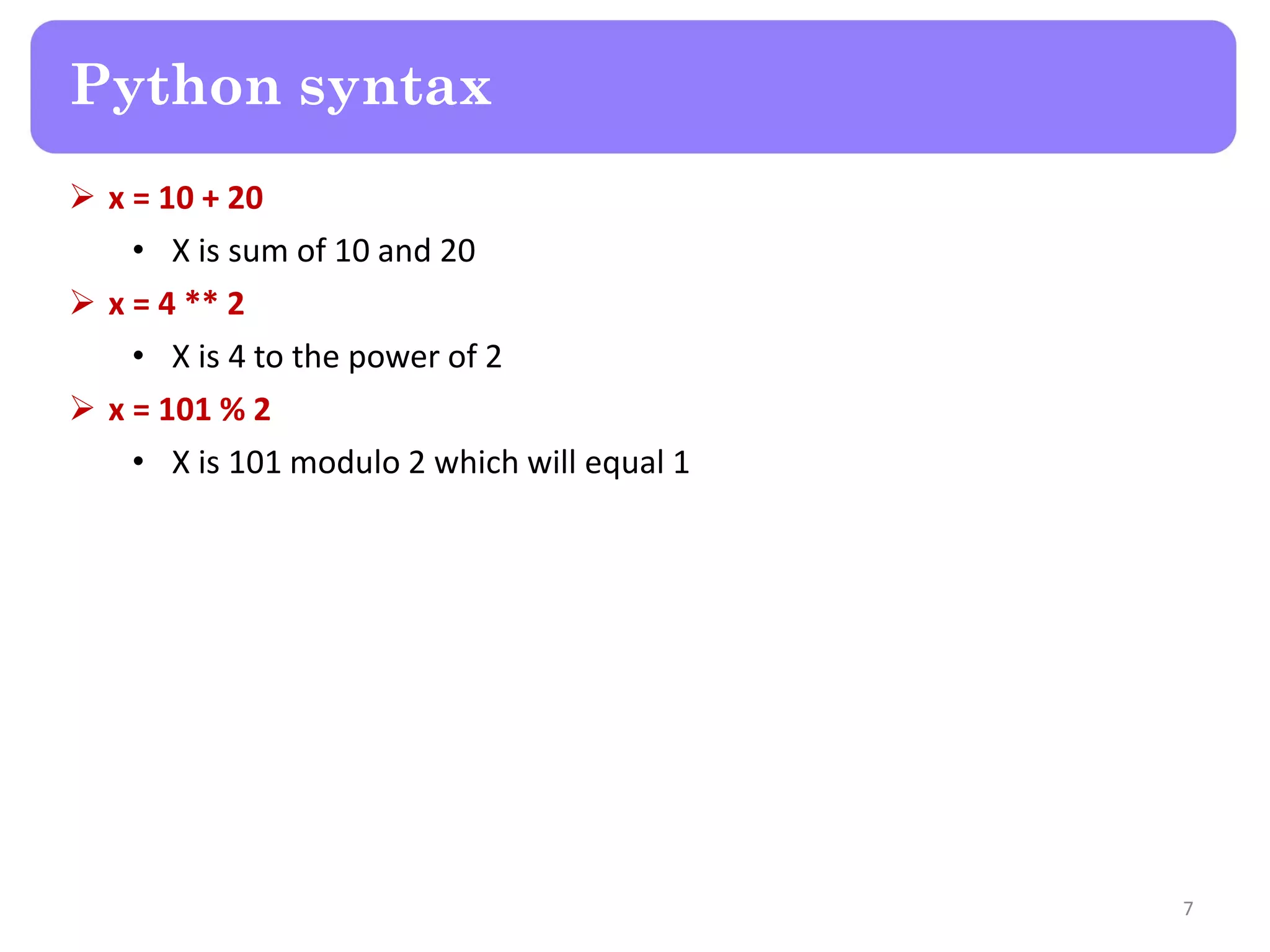
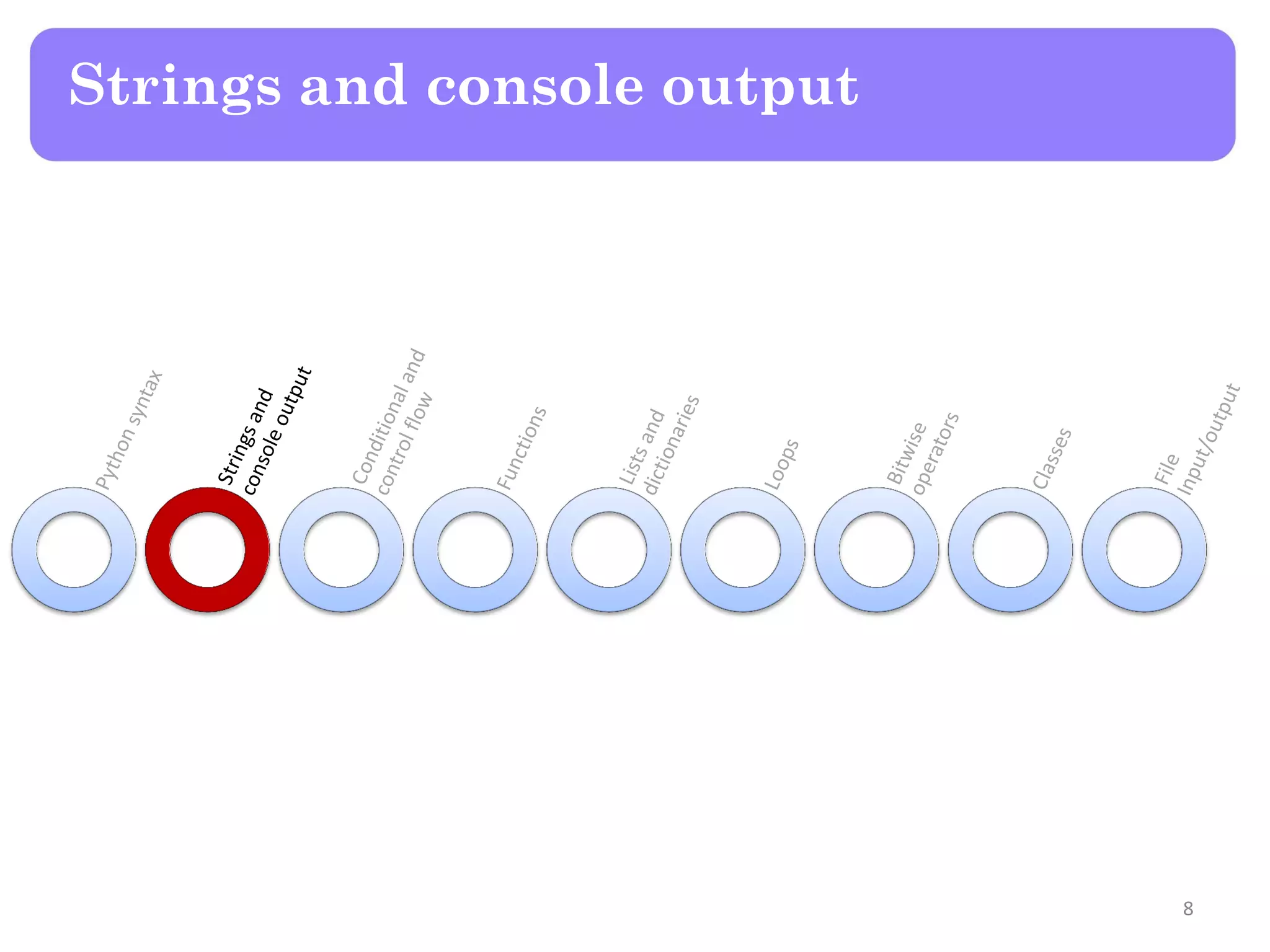
![ var = “Hello Python” • Put string “Hello Python” in variable var c = “Hello”[0] • Put character at index zero of string “Hello” which is ‘H’ in variable c, so c will contain the value ‘H’ c = var[4] • c will have the value at index 4 which is ‘o’ len(var) • Returns the length of the given string d = str(32) • d will contain the string representation of the value 32, so d will contain “32” as a string. Strings and console output 9](https://image.slidesharecdn.com/lecture5-pythonforraspberrypi-150819171856-lva1-app6891/75/Raspberry-Pi-Lecture-5-Python-for-Raspberry-Pi-9-2048.jpg)
![ print var.lower() • Print string in variable var with all letters lower case. print var.upper() • Print string in variable var with all letters upper case. mystr = var + “Scripting” • Concatenate strings, value of mystr will be “Hello Python Scripting” print “Welcome” + “ to” + “ python” • Prints Welcome to python mystr = var[2:len(var)] • Variable mystr will contain string inside var from index 2 (third character) till the end of the string inside var. Print “value1 is %s, value2 is %s” %(var1, var2) • Prints the values inside variables var1 and var2. Strings and console output 10](https://image.slidesharecdn.com/lecture5-pythonforraspberrypi-150819171856-lva1-app6891/75/Raspberry-Pi-Lecture-5-Python-for-Raspberry-Pi-10-2048.jpg)
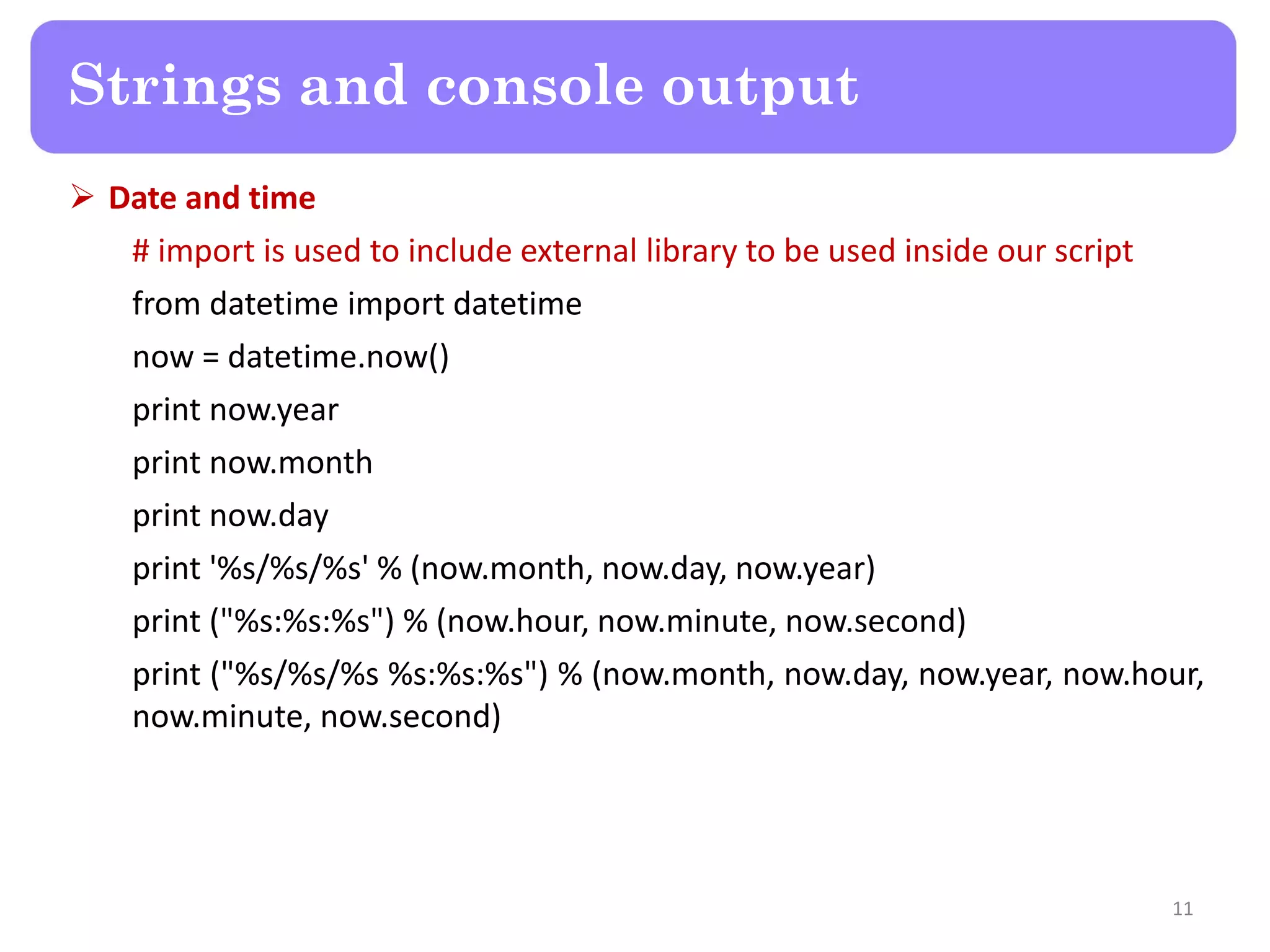
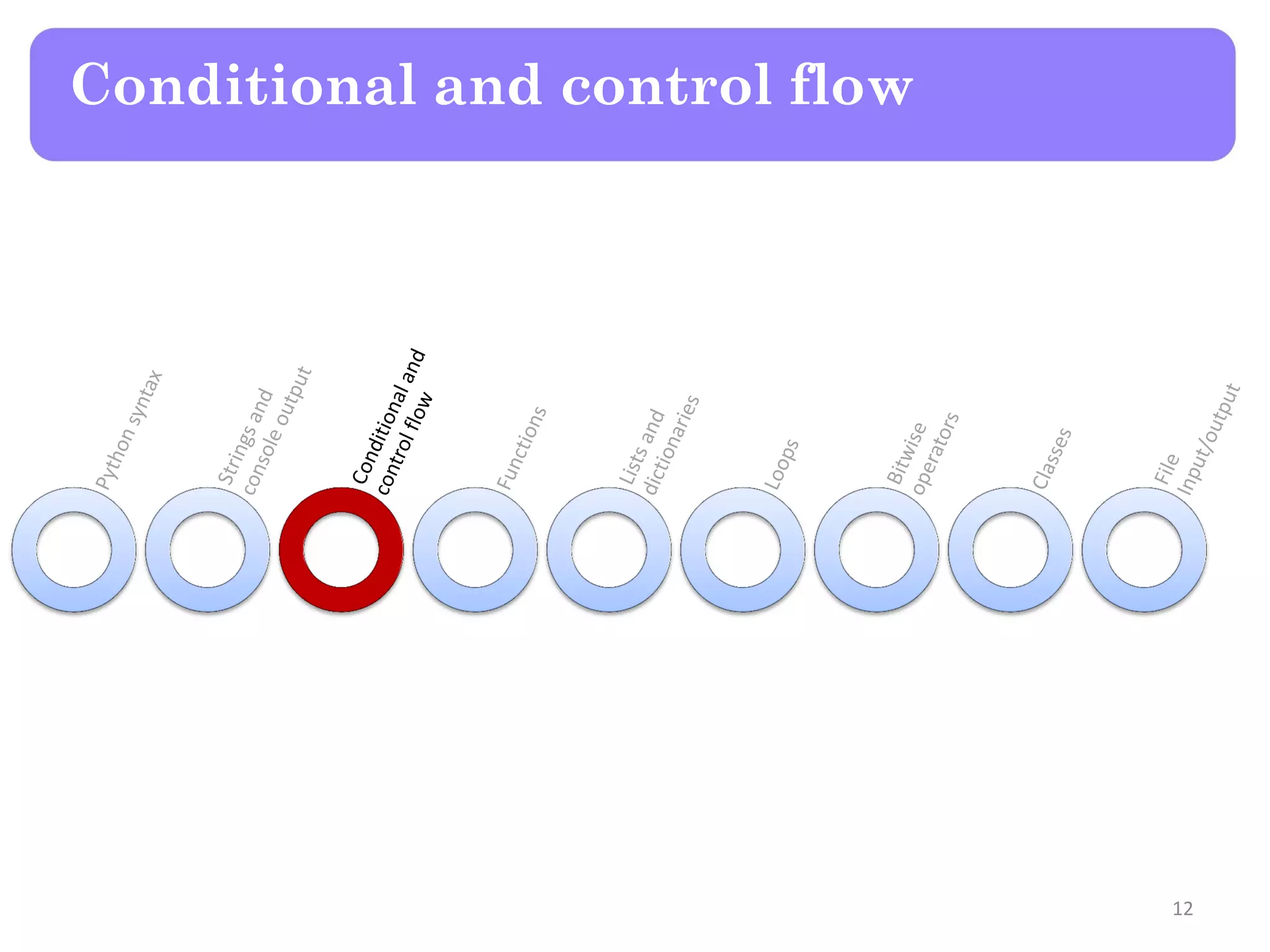
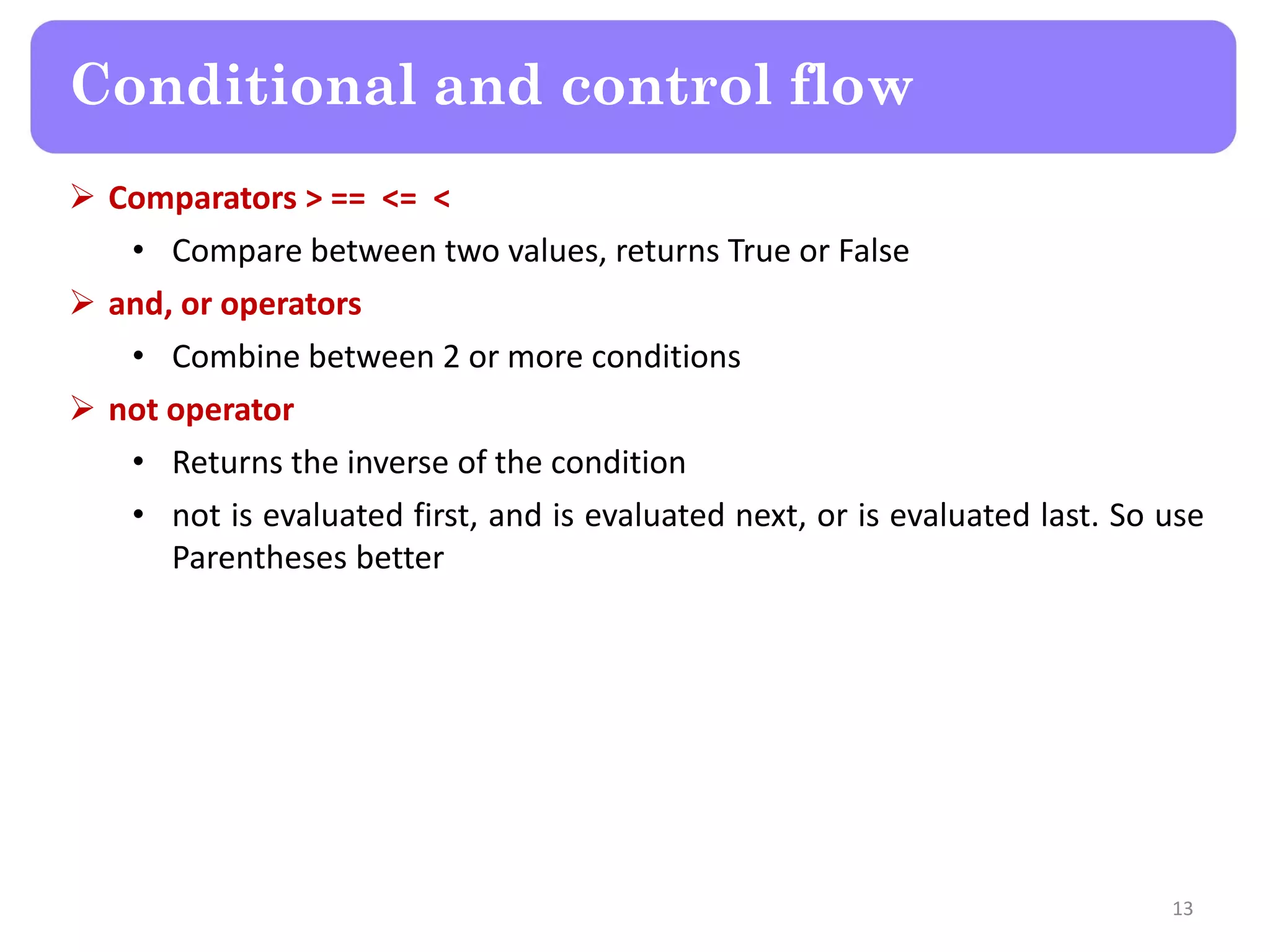
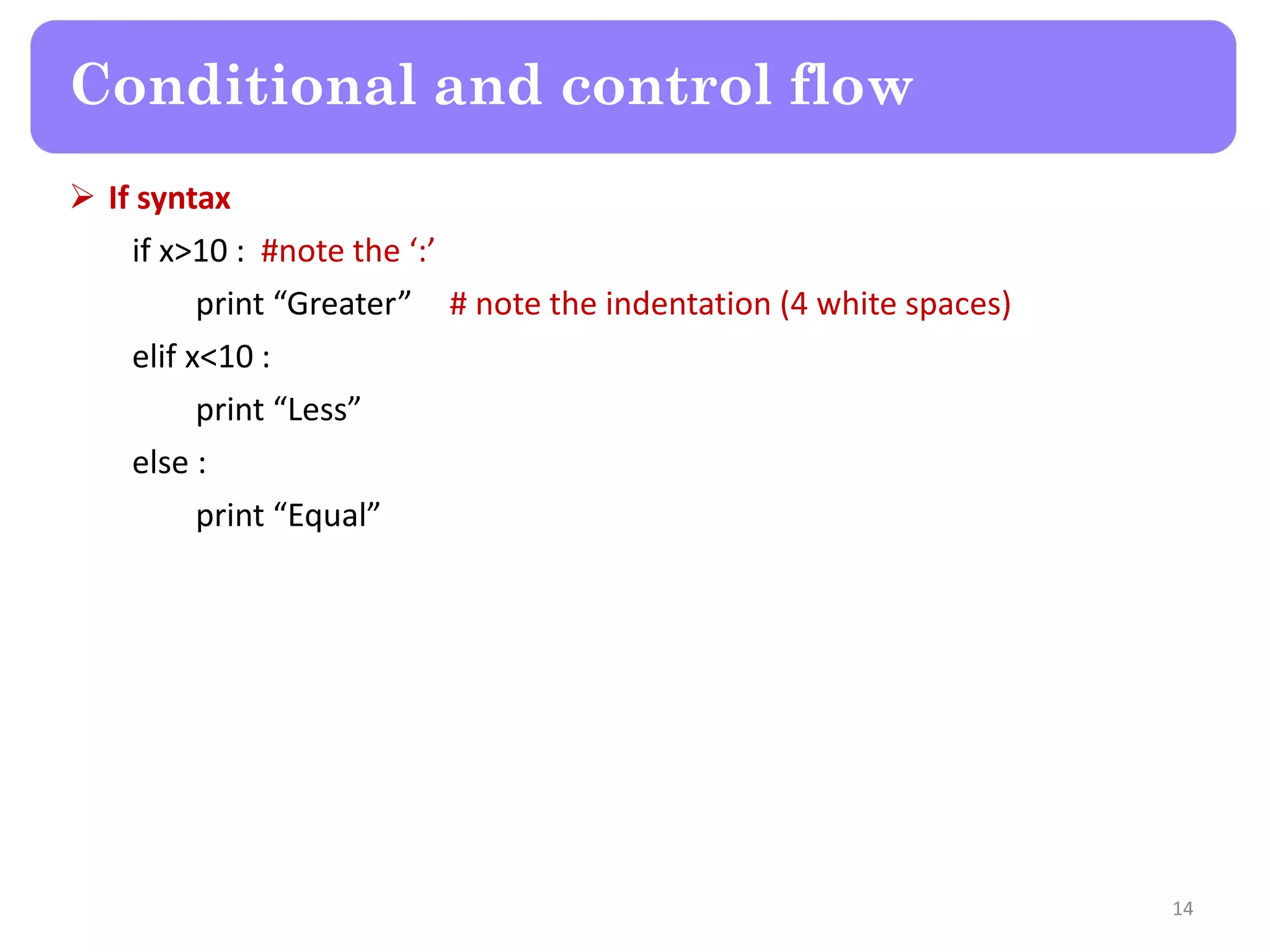
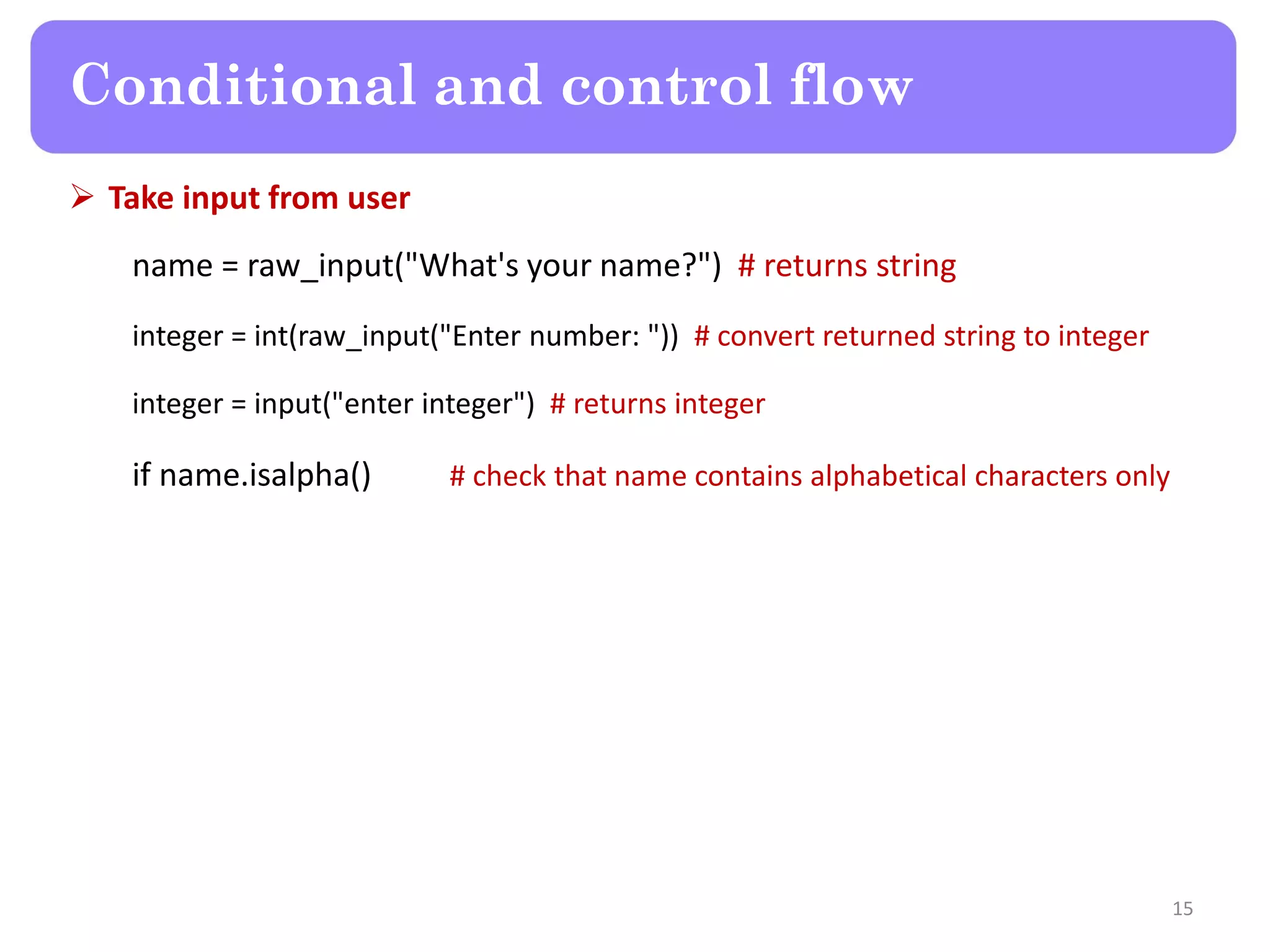
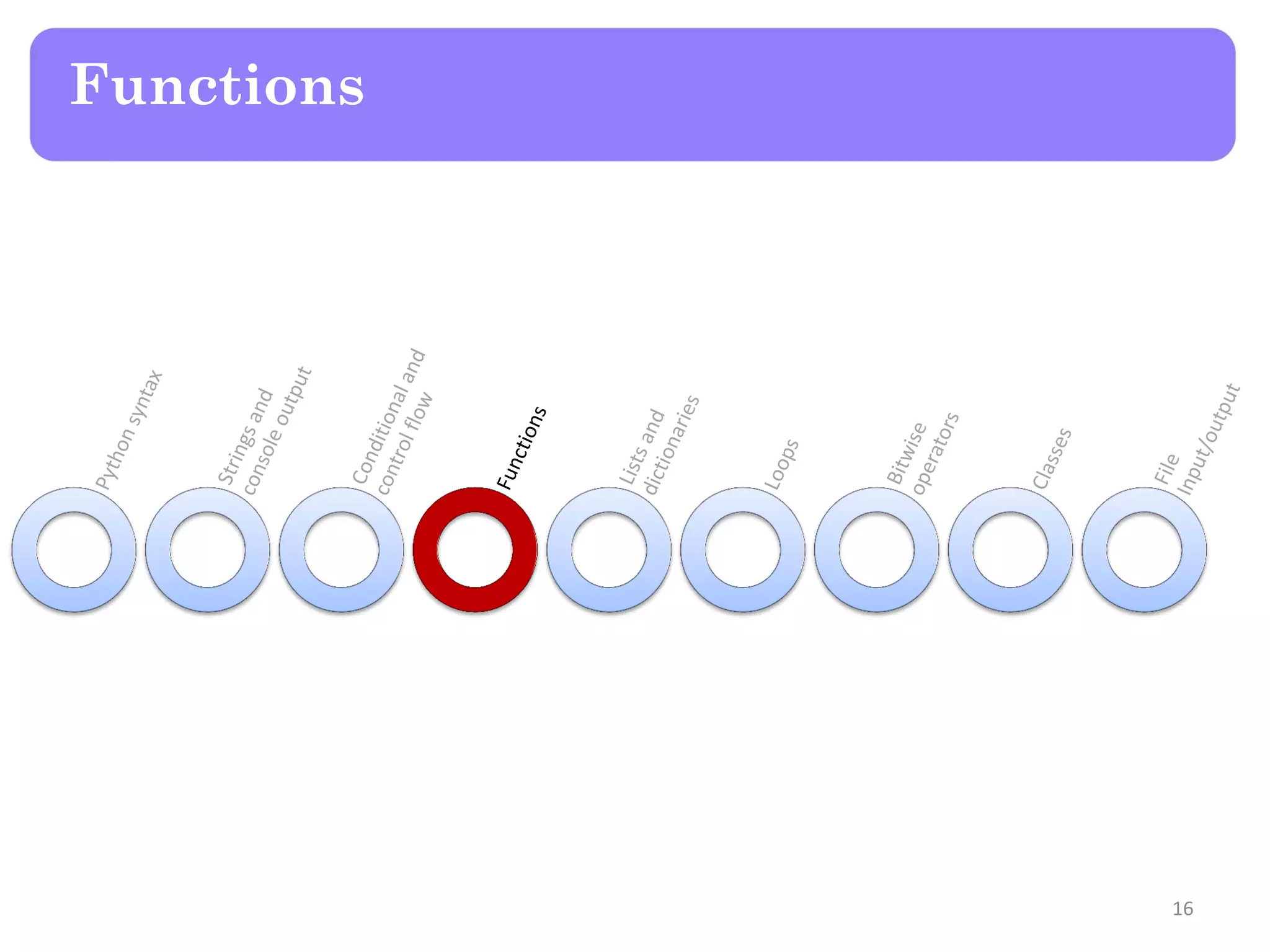
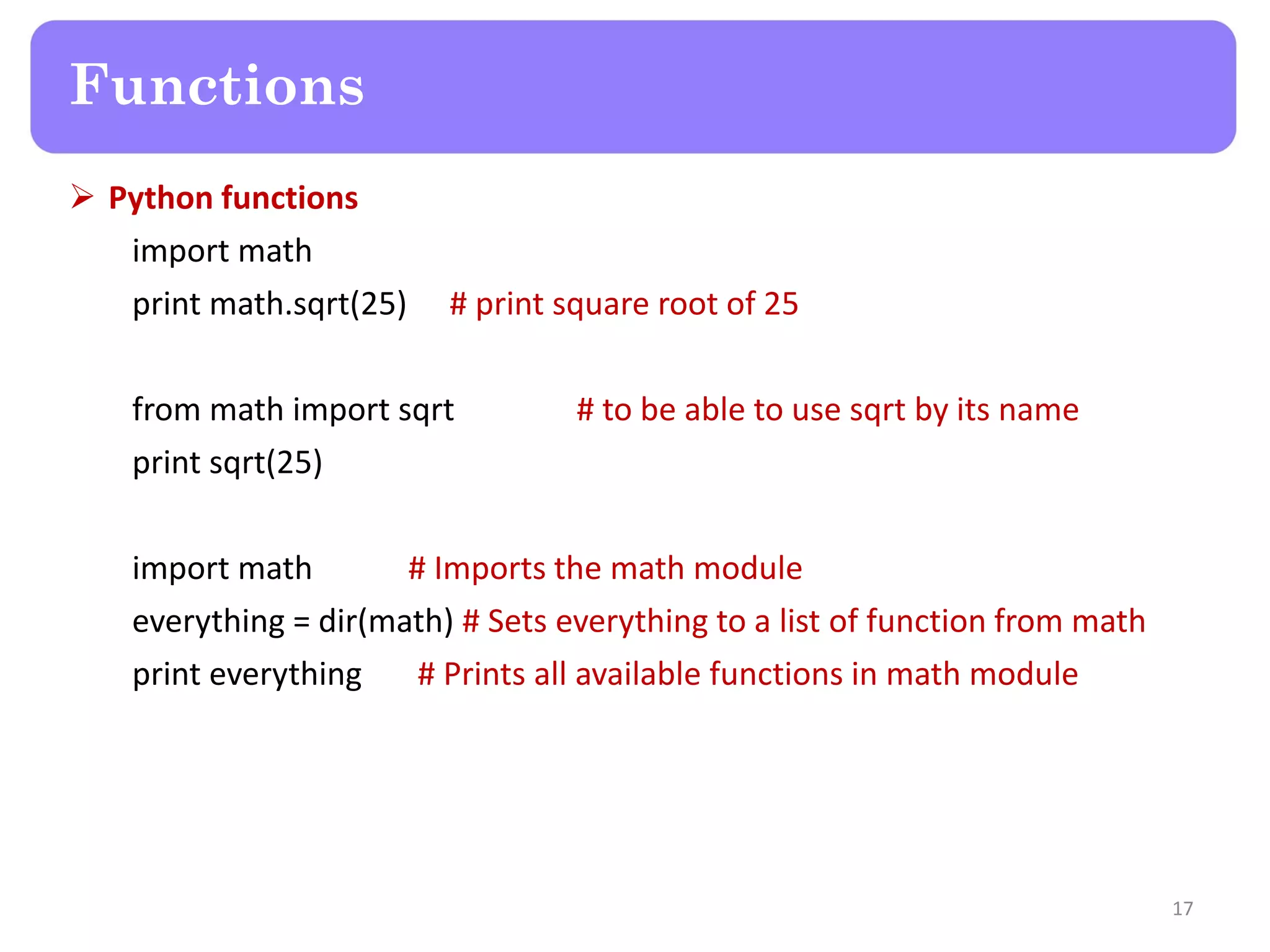
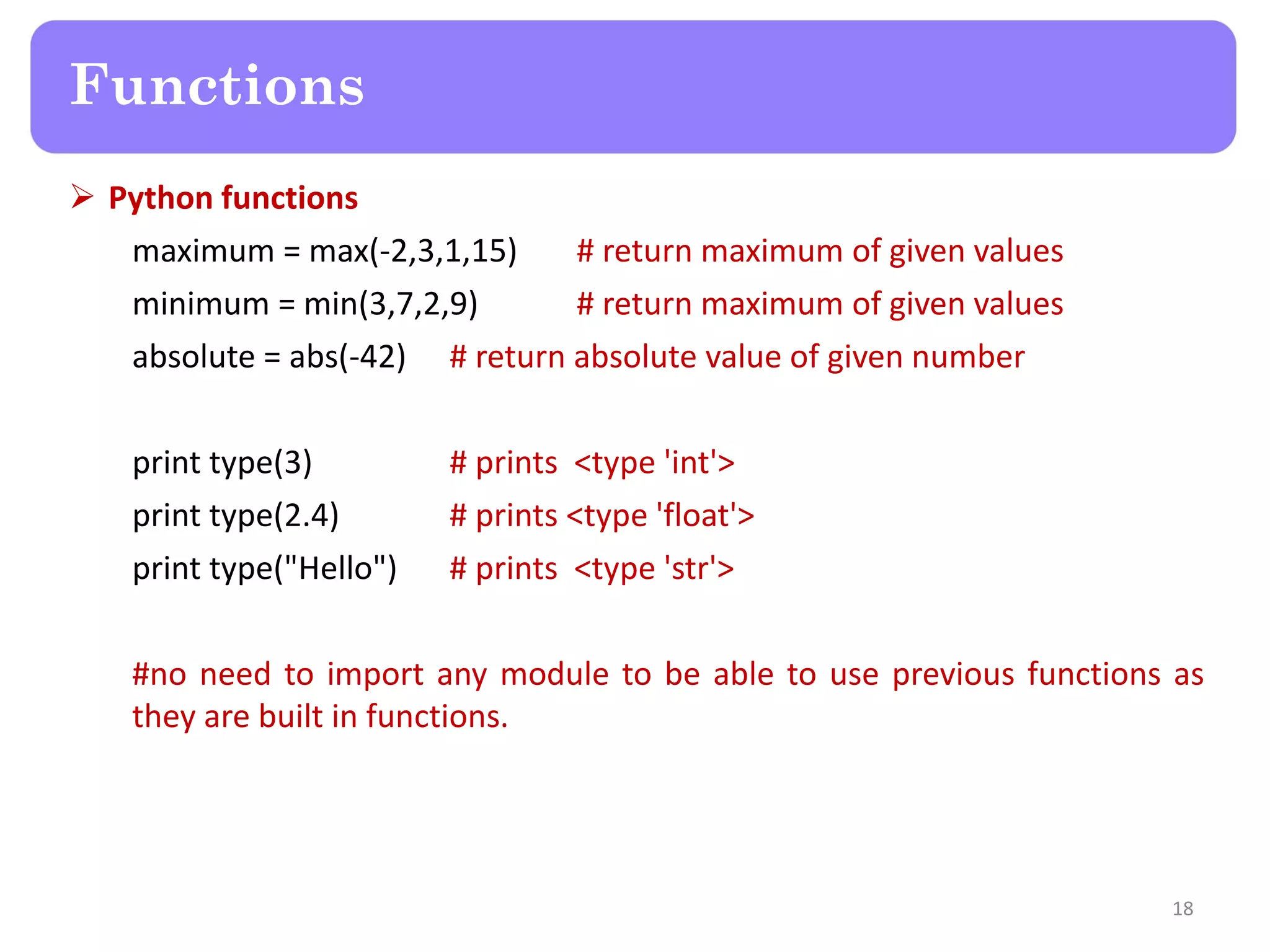
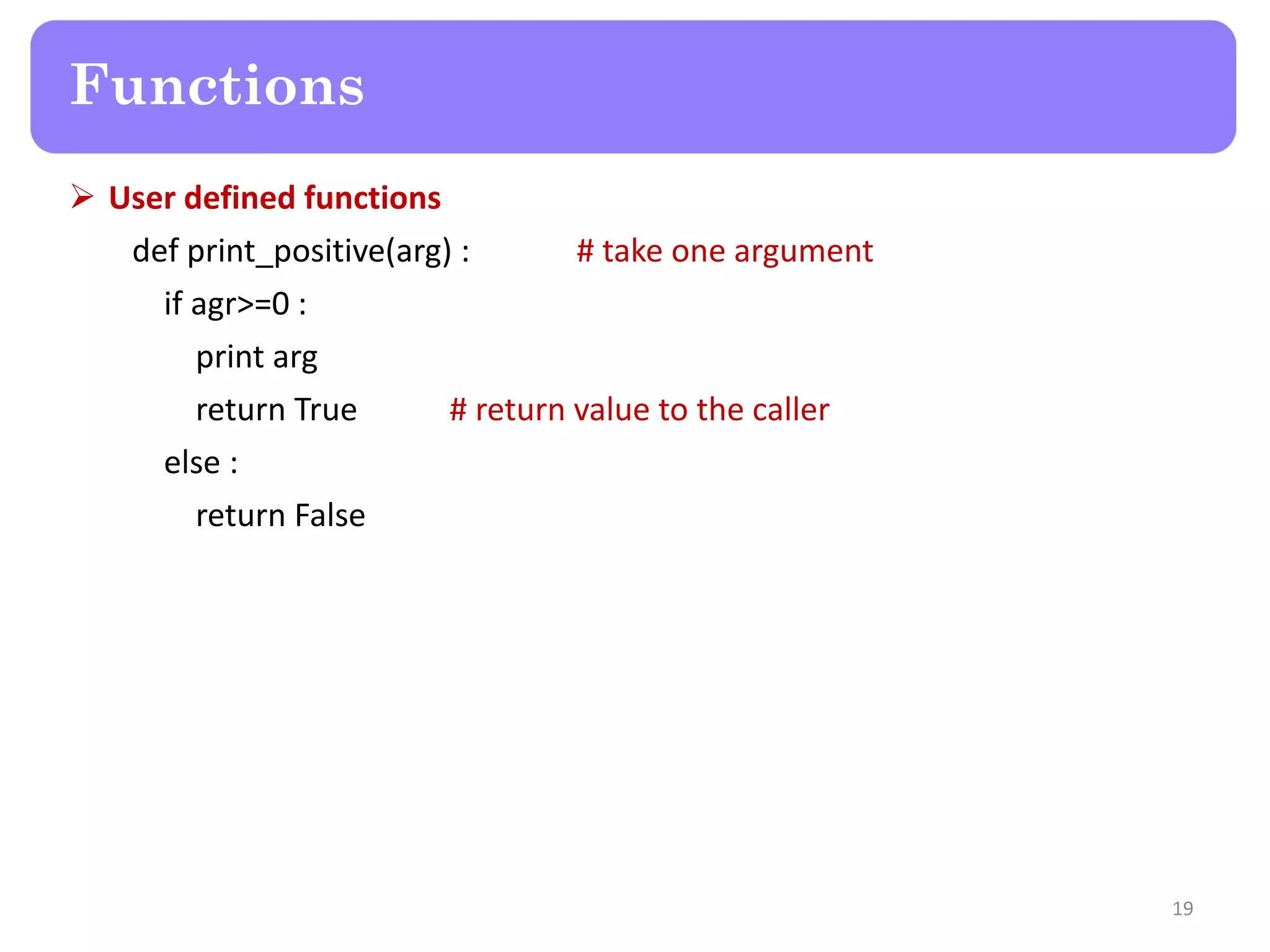
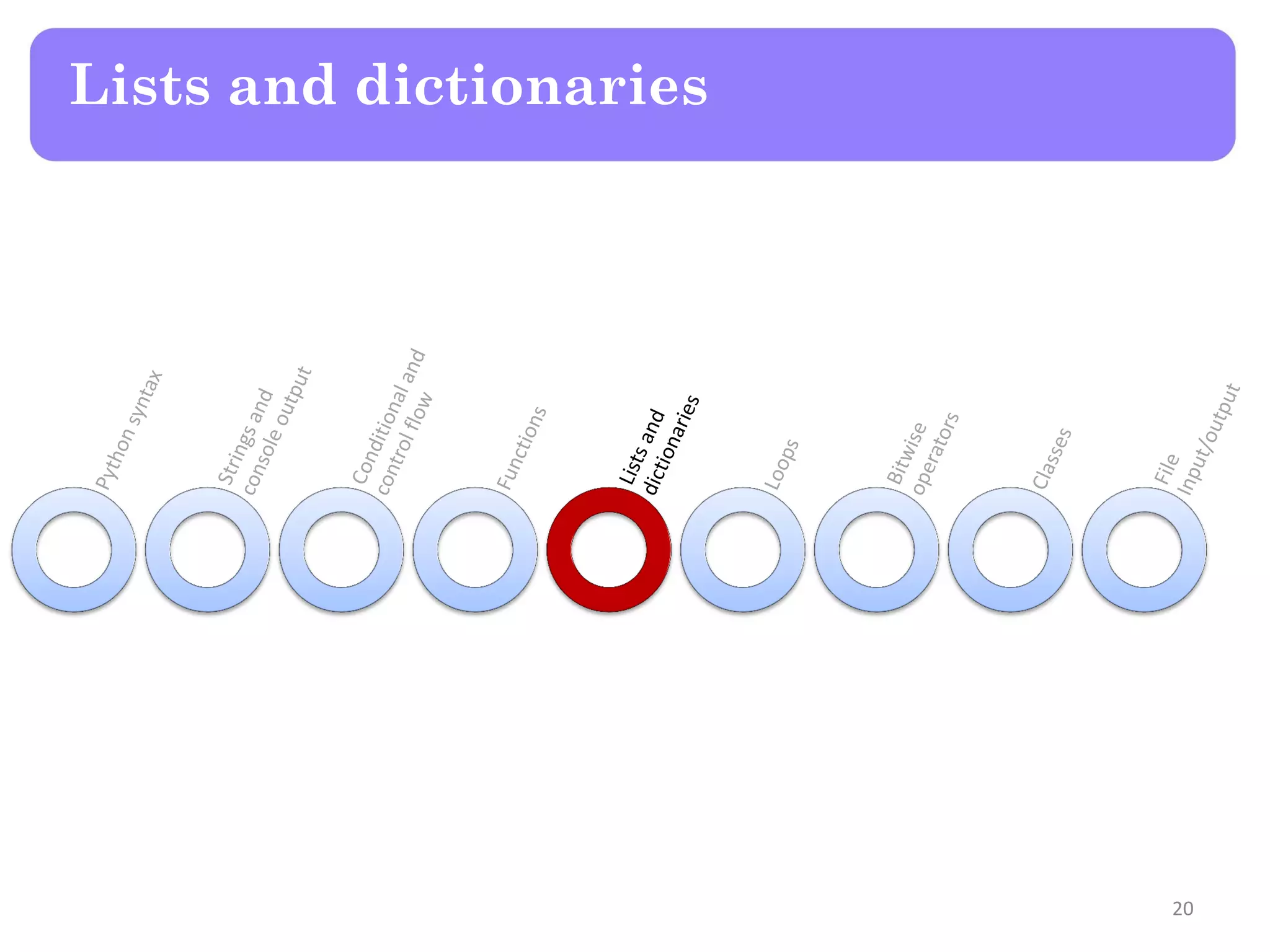
![ list = [item1, item2, item3] • Create list of the given 3 items list.append(newItem) • Add new element at the end of the list list[0:3] • Values of the list from index 0 and stop before index 3 list[:2] • Grabs the first two items list[3:] • Grabs the fourth through last items string_index = list.index(“mystring") • Find index of “mystring" Lists and dictionaries 21](https://image.slidesharecdn.com/lecture5-pythonforraspberrypi-150819171856-lva1-app6891/75/Raspberry-Pi-Lecture-5-Python-for-Raspberry-Pi-21-2048.jpg)
![ list.insert(index, item) • insert item at index and shift all next items down by 1 list.sort() • sort list ascending list.remove(item3) • remove item3 from list Loop on all list items my_list = [1,9,3,8,5,7] for number in my_list: print 2 * number # print 2 18 6 16 10 14 Lists and dictionaries 22](https://image.slidesharecdn.com/lecture5-pythonforraspberrypi-150819171856-lva1-app6891/75/Raspberry-Pi-Lecture-5-Python-for-Raspberry-Pi-22-2048.jpg)
![ students= {‘std1' : 90, ‘std2' : 85, ‘std2' : 93} • Assigning a dictionary with three key-value pairs to students print students[‘std1'] • Prints std1 grade which is 90 dict_name[new_key] = new_value • add new value to dictionary del dict_name[key_name] • delete key-value pair from dictionary dict_name[key] = new_value • change value Lists and dictionaries 23](https://image.slidesharecdn.com/lecture5-pythonforraspberrypi-150819171856-lva1-app6891/75/Raspberry-Pi-Lecture-5-Python-for-Raspberry-Pi-23-2048.jpg)
![a = [0, 1, 2, 3, 4, 5, 6, 7, 8, 9, 10, 11, 12, 13] # print even numbers in list for number in a : if number%2 == 0 : print number # loop on string characters for letter in “Mystring": print letter # print all letters each one on separate line Lists and dictionaries 24](https://image.slidesharecdn.com/lecture5-pythonforraspberrypi-150819171856-lva1-app6891/75/Raspberry-Pi-Lecture-5-Python-for-Raspberry-Pi-24-2048.jpg)
![# function take list as argument def count_small(numbers): # returns number of values less than 10 total = 0 for n in numbers: if n < 10: total = total + 1 return total num = [4, 8, 15, 16, 23, 42] small = count_small(num) print small # print number of values in list that are less than 10 Lists and dictionaries 25](https://image.slidesharecdn.com/lecture5-pythonforraspberrypi-150819171856-lva1-app6891/75/Raspberry-Pi-Lecture-5-Python-for-Raspberry-Pi-25-2048.jpg)
![# shop example shopping_list = ["banana", "orange", "apple"] stock = {"banana": 6, "apple": 0, "orange": 32} prices = {"banana": 4, "apple": 2, "orange": 1.5} def compute_bill(food) : # compute the total price of given food list total = 0 for item in food : # loop on all items in food list if stock[item]>0 : # if item exists in stock stock[item]-=1 # reduce stock by 1 total+=prices[item] # add item price to total return total Print compute_bill(shopping_list) Lists and dictionaries 26](https://image.slidesharecdn.com/lecture5-pythonforraspberrypi-150819171856-lva1-app6891/75/Raspberry-Pi-Lecture-5-Python-for-Raspberry-Pi-26-2048.jpg)
![n = [1, 3, 5] n.pop(1) # Returns 3 (the item at index 1) and remove it from list n.remove(1) # Removes 1 from the list, # NOT the item at index 1 del(n[1]) # Doesn't return anything, but removes item at index 1 Lists and dictionaries 27](https://image.slidesharecdn.com/lecture5-pythonforraspberrypi-150819171856-lva1-app6891/75/Raspberry-Pi-Lecture-5-Python-for-Raspberry-Pi-27-2048.jpg)
![def my_function(x): for i in range(0, len(x)): # loop on all indices in list x x[i] = x[i] * 2 # change value at index i with the double of this value return x # return the edited list Note range(6) # [0,1,2,3,4,5] range(1,6) # [1,2,3,4,5] range(1,6,3) # [1,4] from 1 to 6 with step 3 letters = ['a', 'b', 'c', 'd'] print " ".join(letters) # prints a b c d print "---".join(letters) # prints a---b---c---d Lists and dictionaries 28](https://image.slidesharecdn.com/lecture5-pythonforraspberrypi-150819171856-lva1-app6891/75/Raspberry-Pi-Lecture-5-Python-for-Raspberry-Pi-28-2048.jpg)
![# list comprehension evens_to_50 = [i for i in range(51) if i % 2 == 0] # list of even numbers till 50 my_list[::2] # from start to end with stride of 2 my_list[::-1] # from end to start with stride of 1 squares = [x**2 for x in range(5)] # contains squares of numbers from 0 to 4 Lists and dictionaries 29](https://image.slidesharecdn.com/lecture5-pythonforraspberrypi-150819171856-lva1-app6891/75/Raspberry-Pi-Lecture-5-Python-for-Raspberry-Pi-29-2048.jpg)
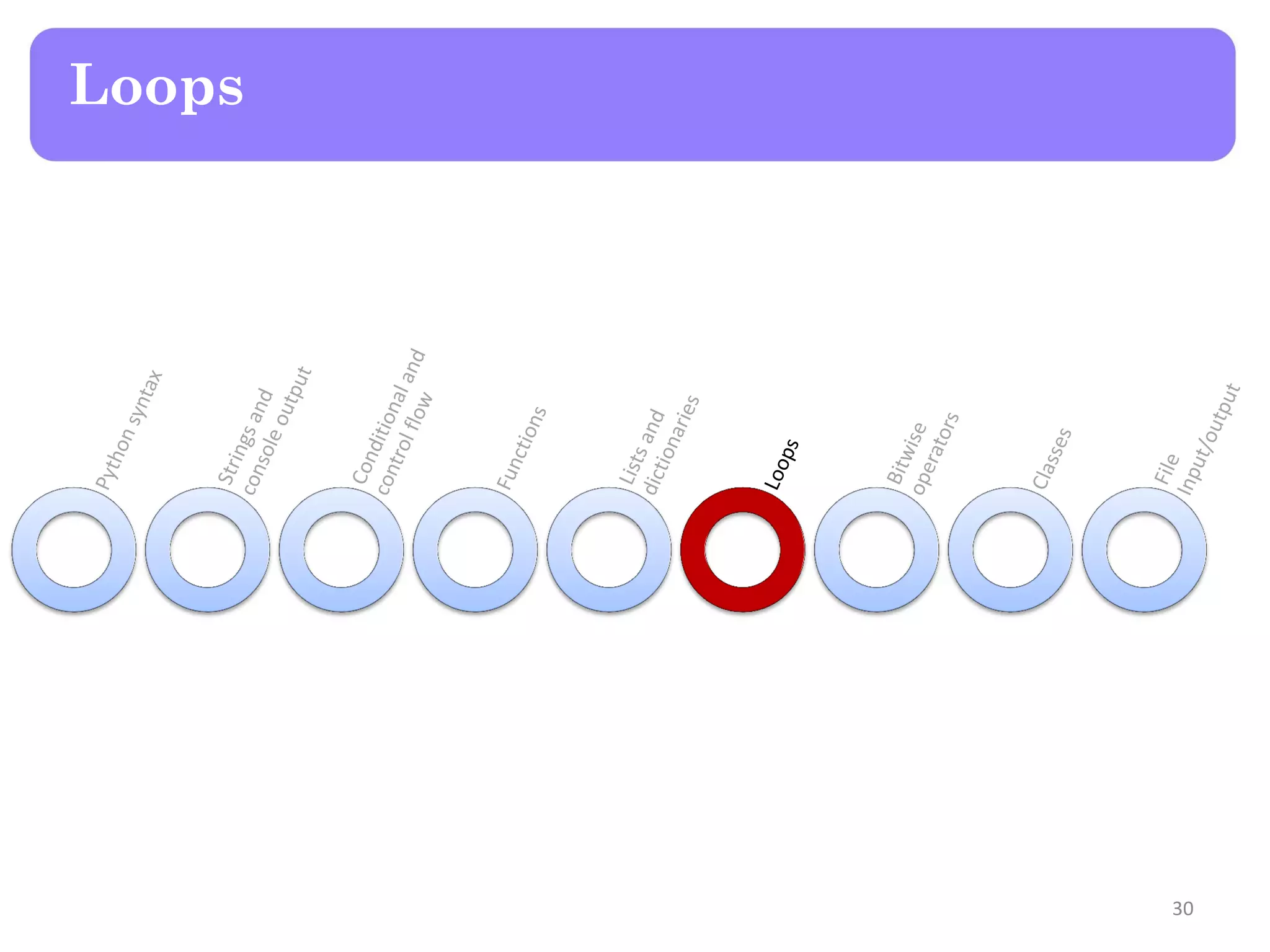
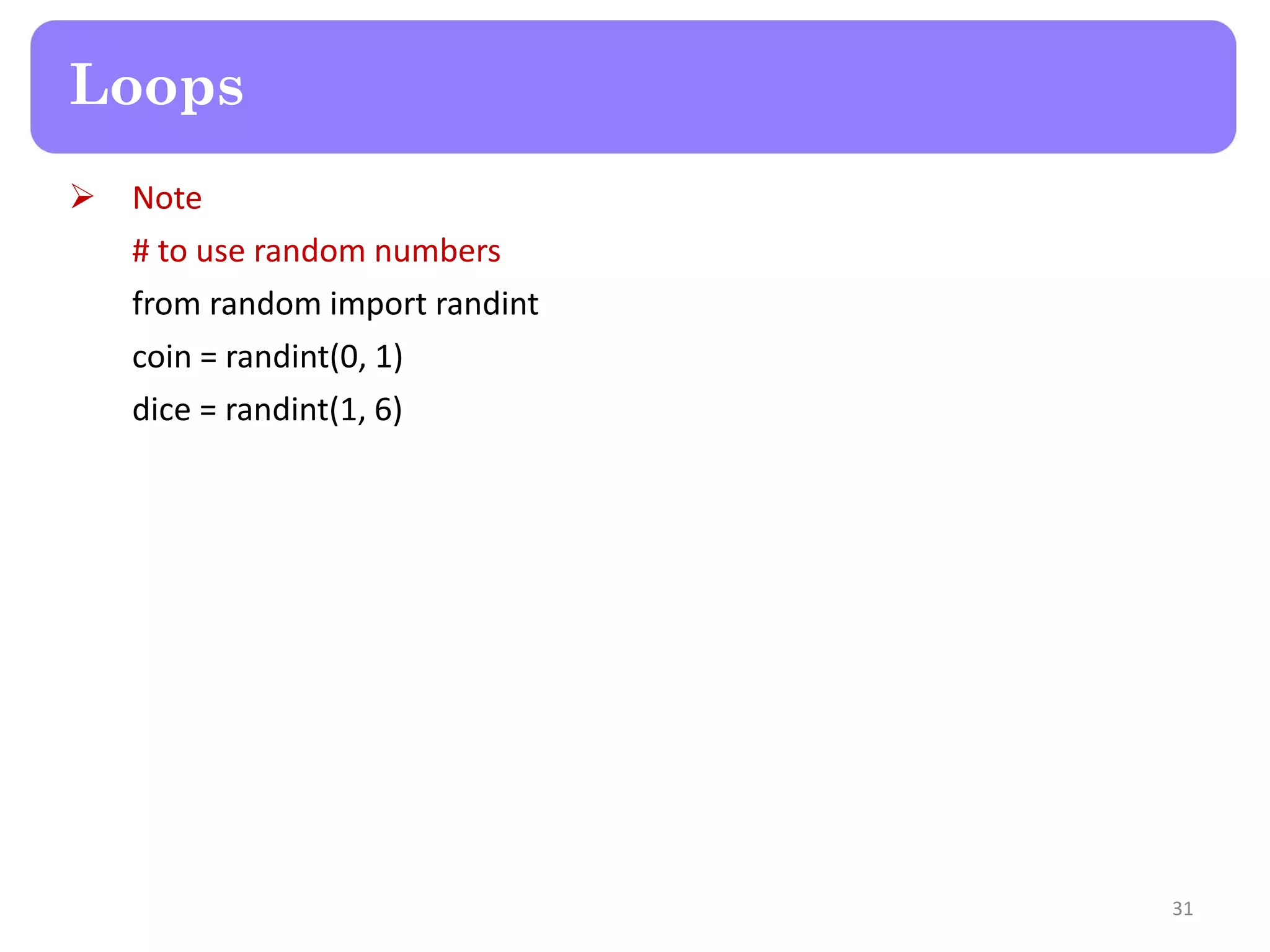
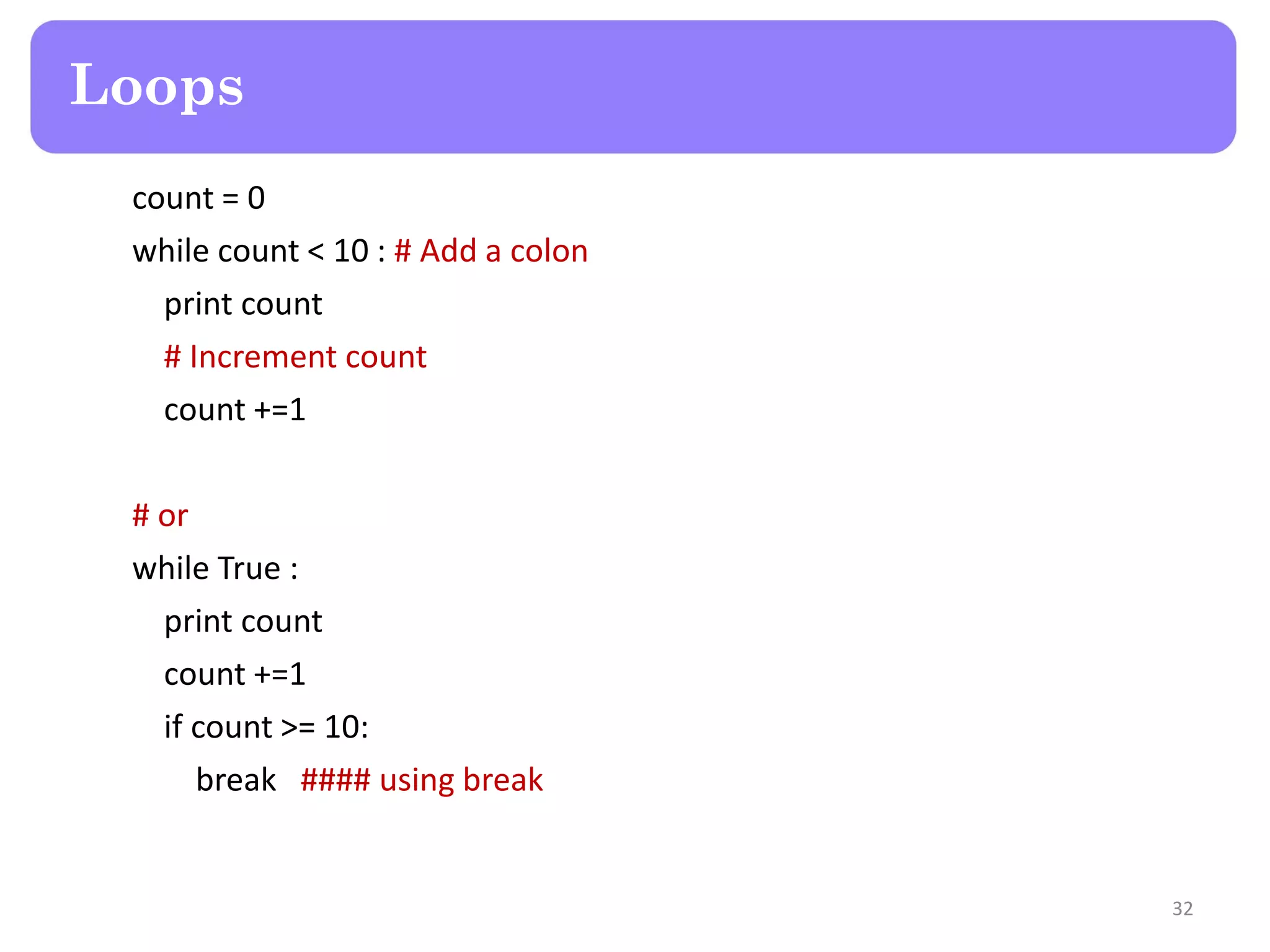
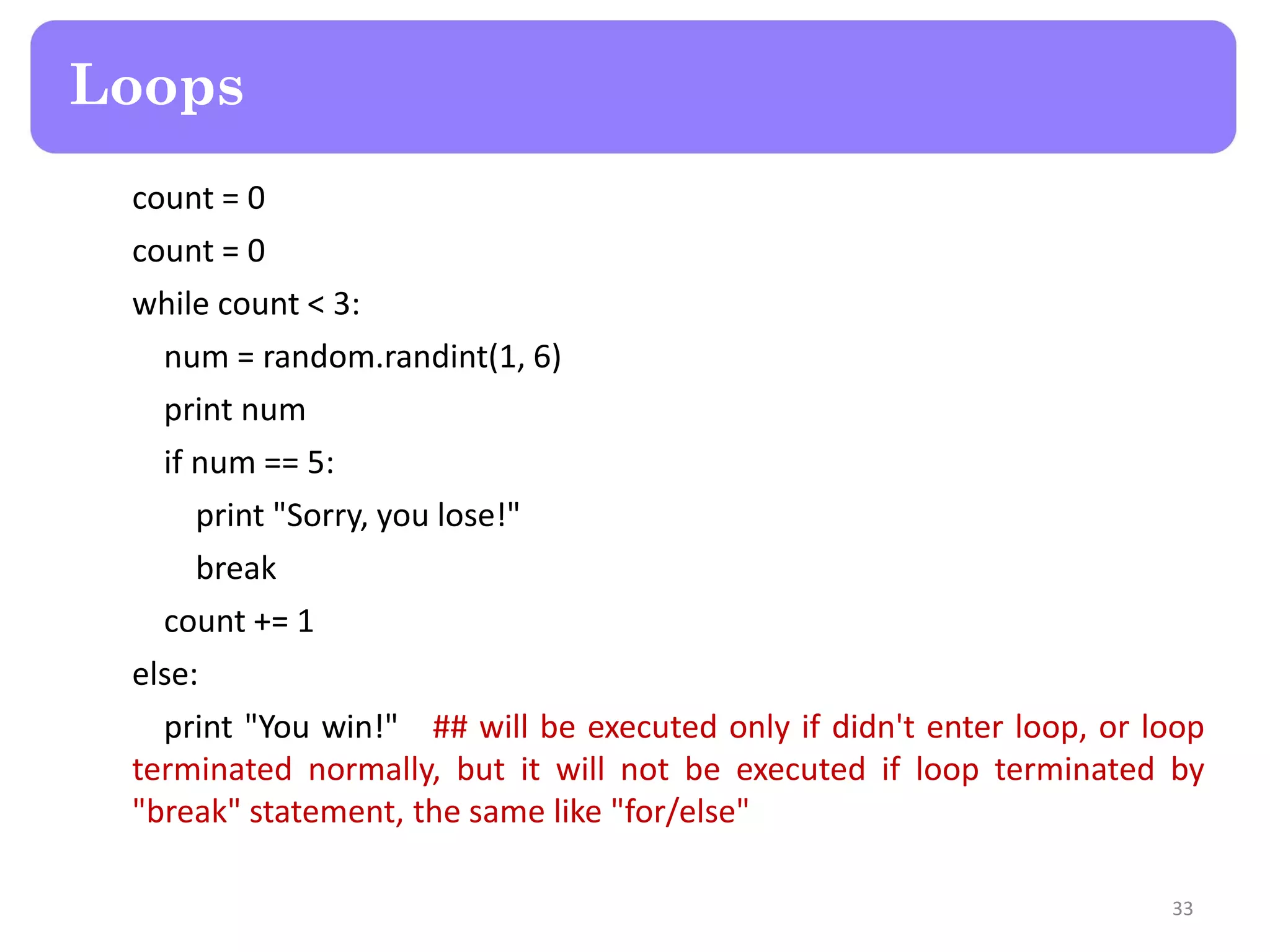
![choices = ['pizza', 'pasta', 'salad', 'nachos'] print 'Your choices are:' for index, item in enumerate(choices): print index+1, item # >> Your choices are: 1 pizza 2 pasta 3 salad 4 nachos Loops 34](https://image.slidesharecdn.com/lecture5-pythonforraspberrypi-150819171856-lva1-app6891/75/Raspberry-Pi-Lecture-5-Python-for-Raspberry-Pi-34-2048.jpg)
